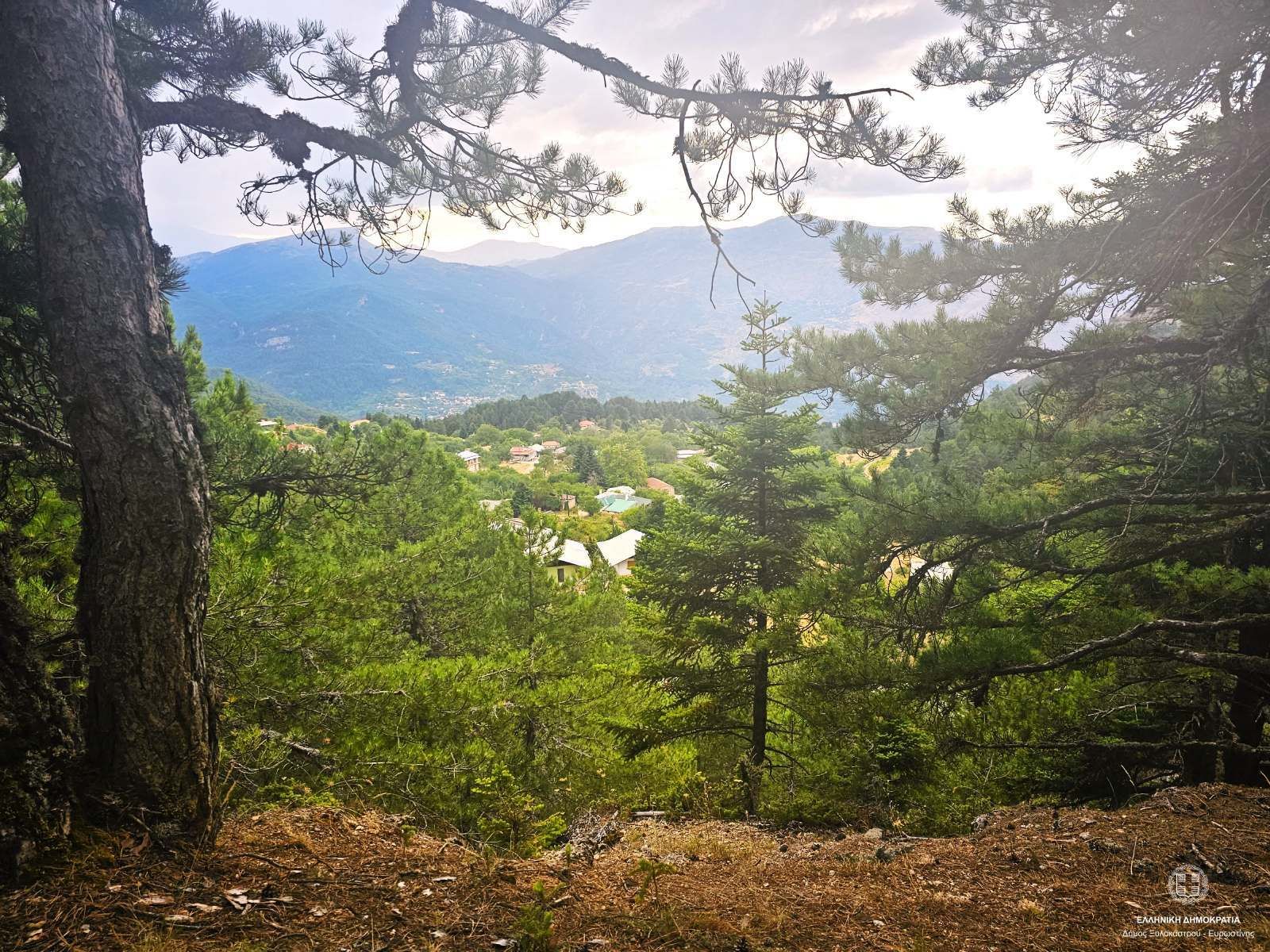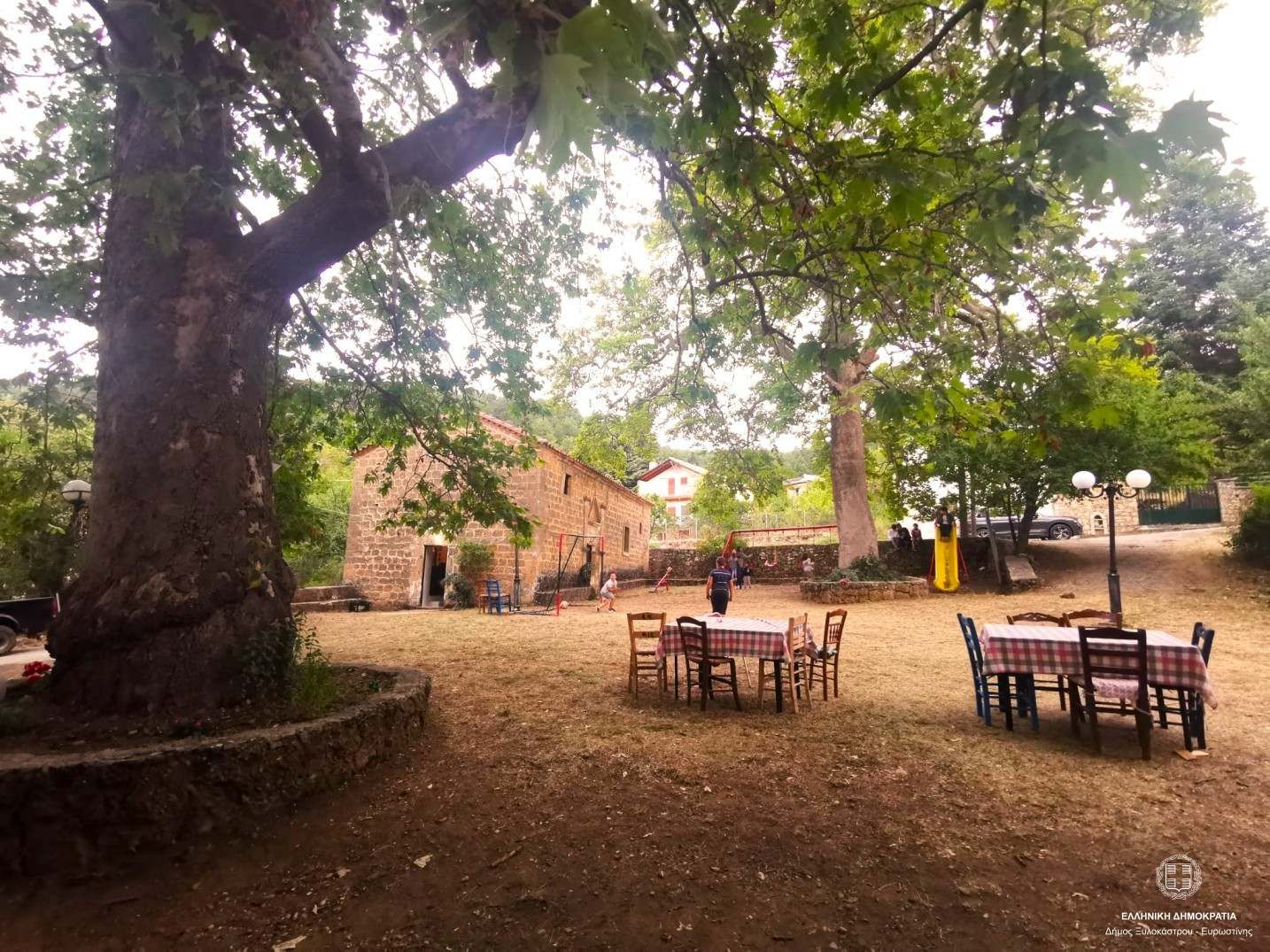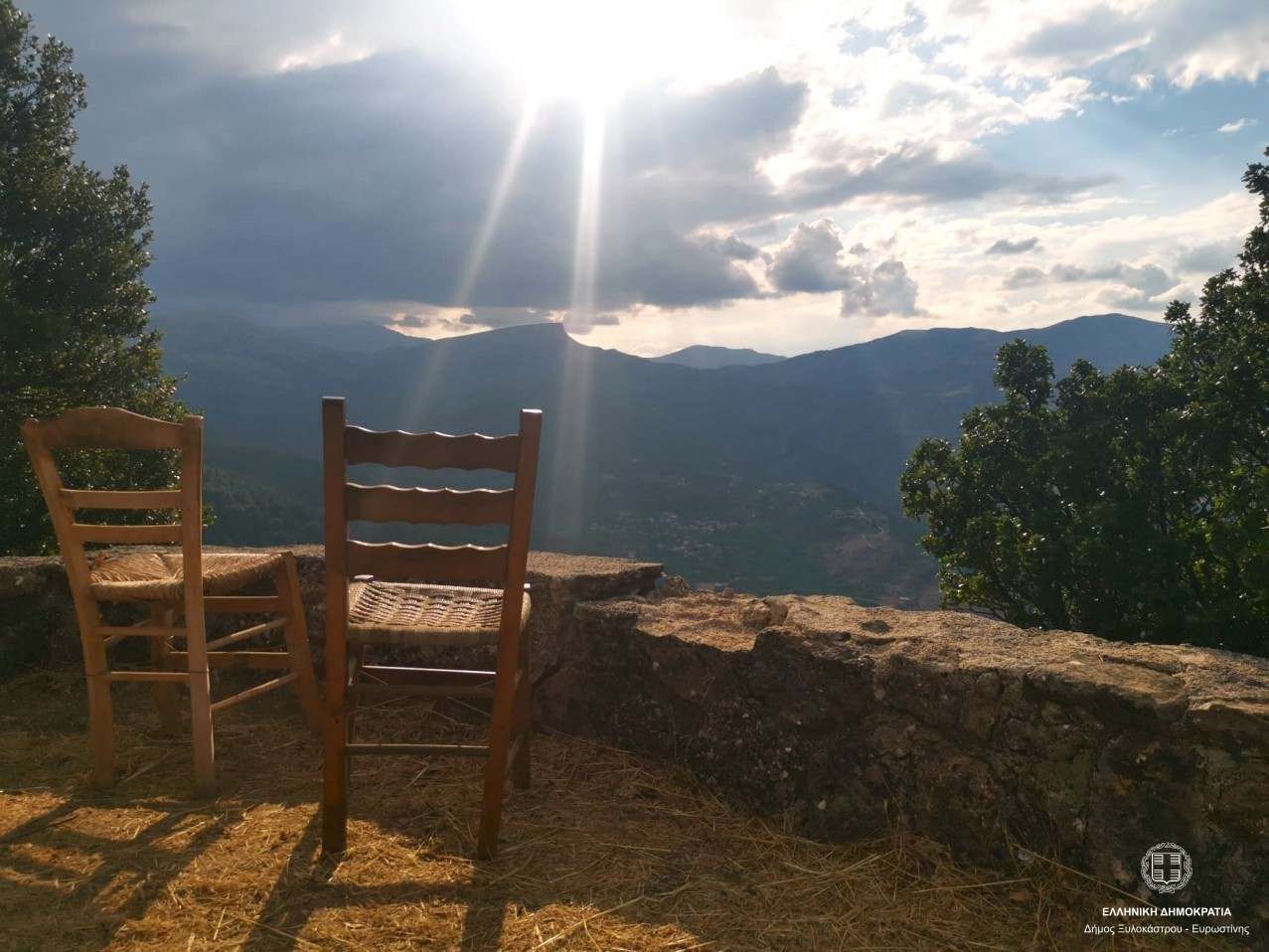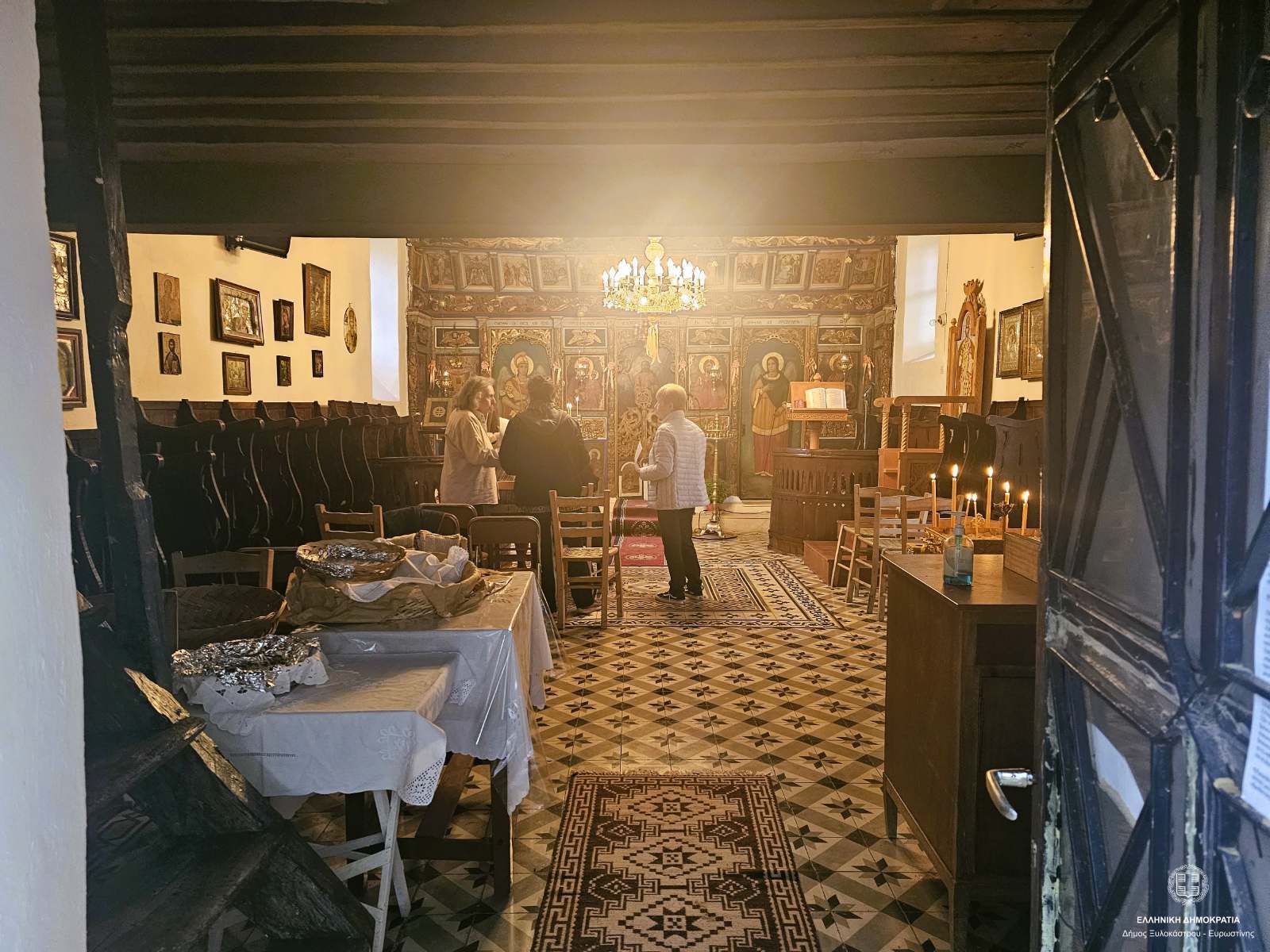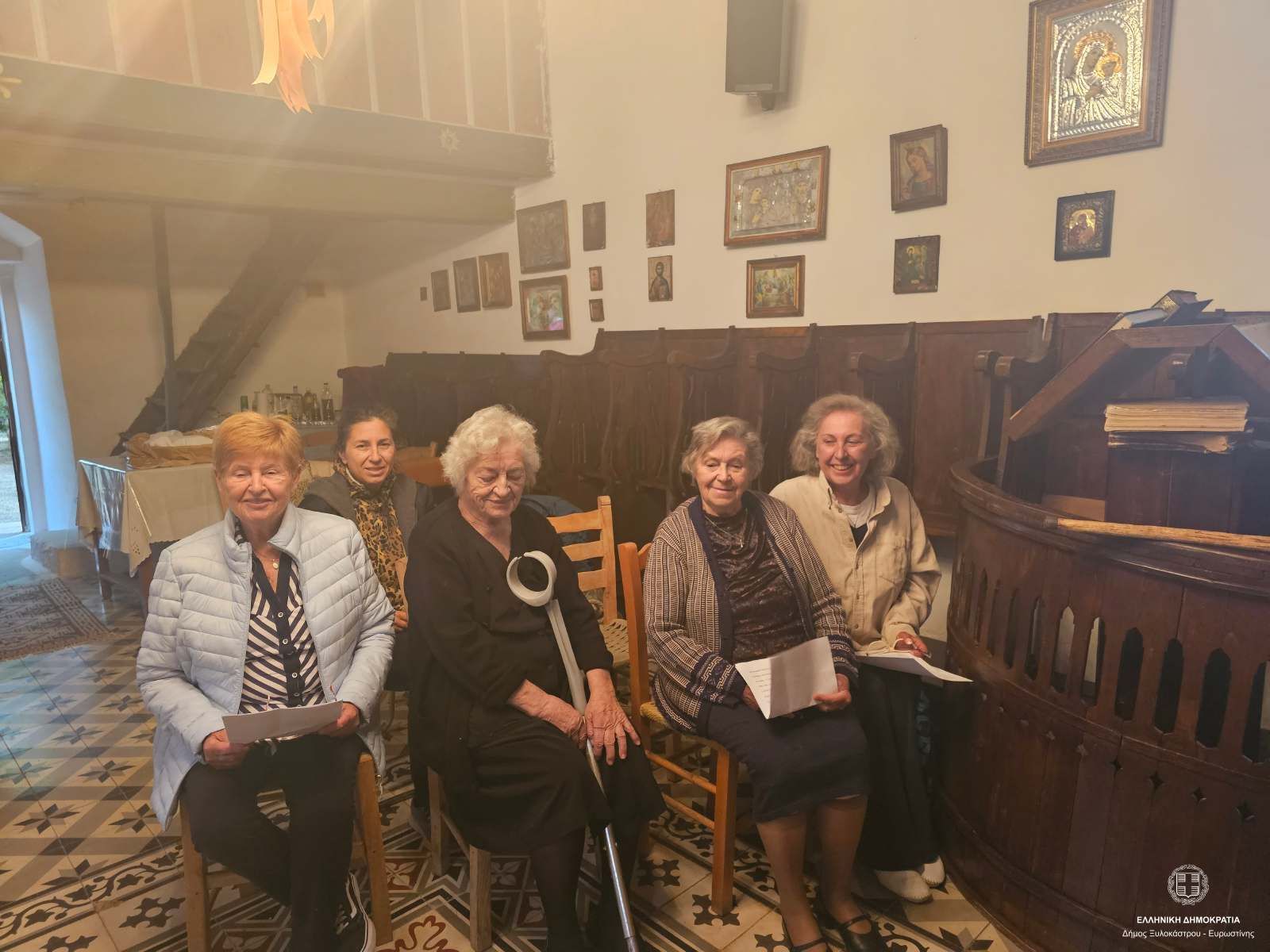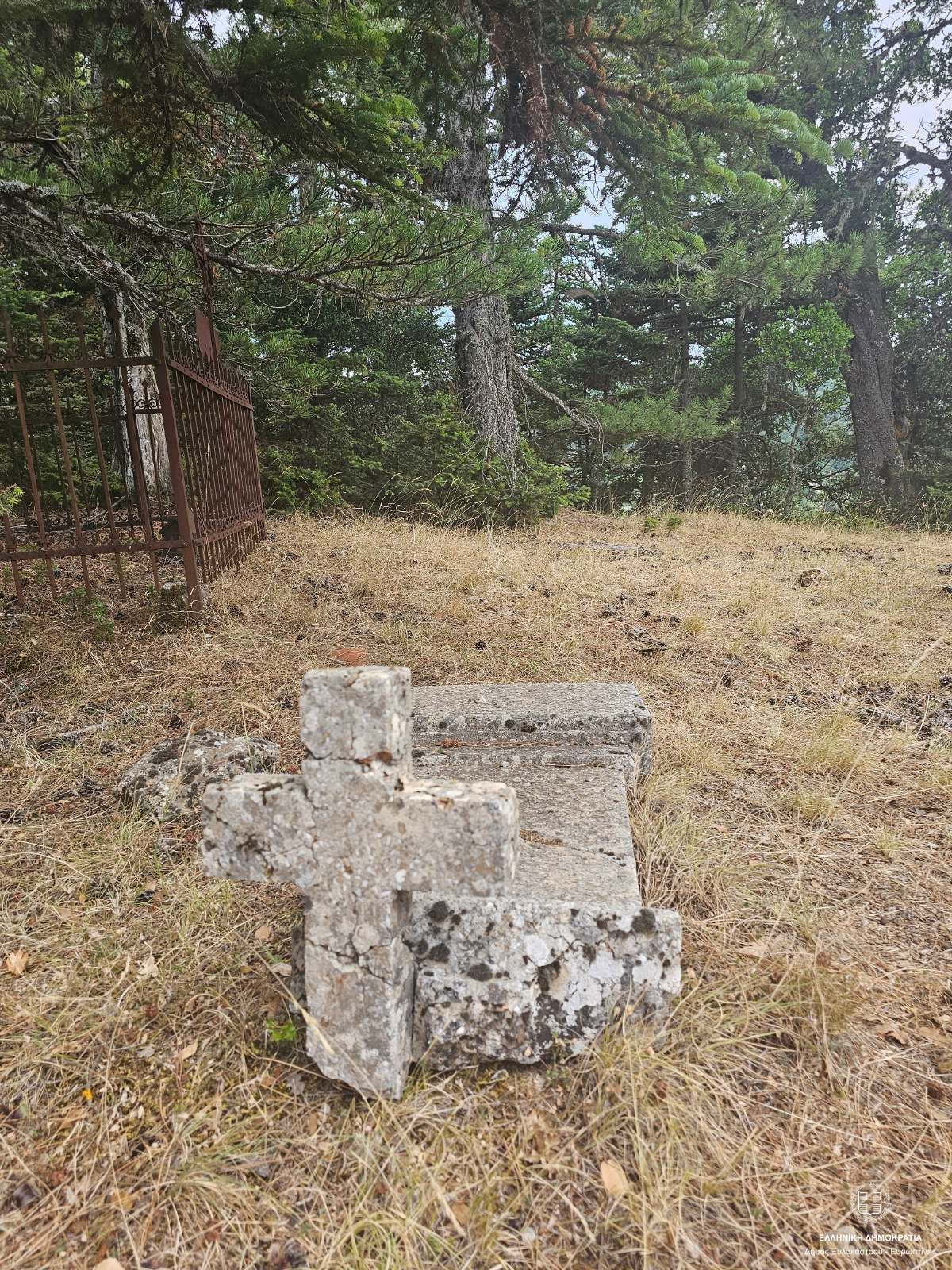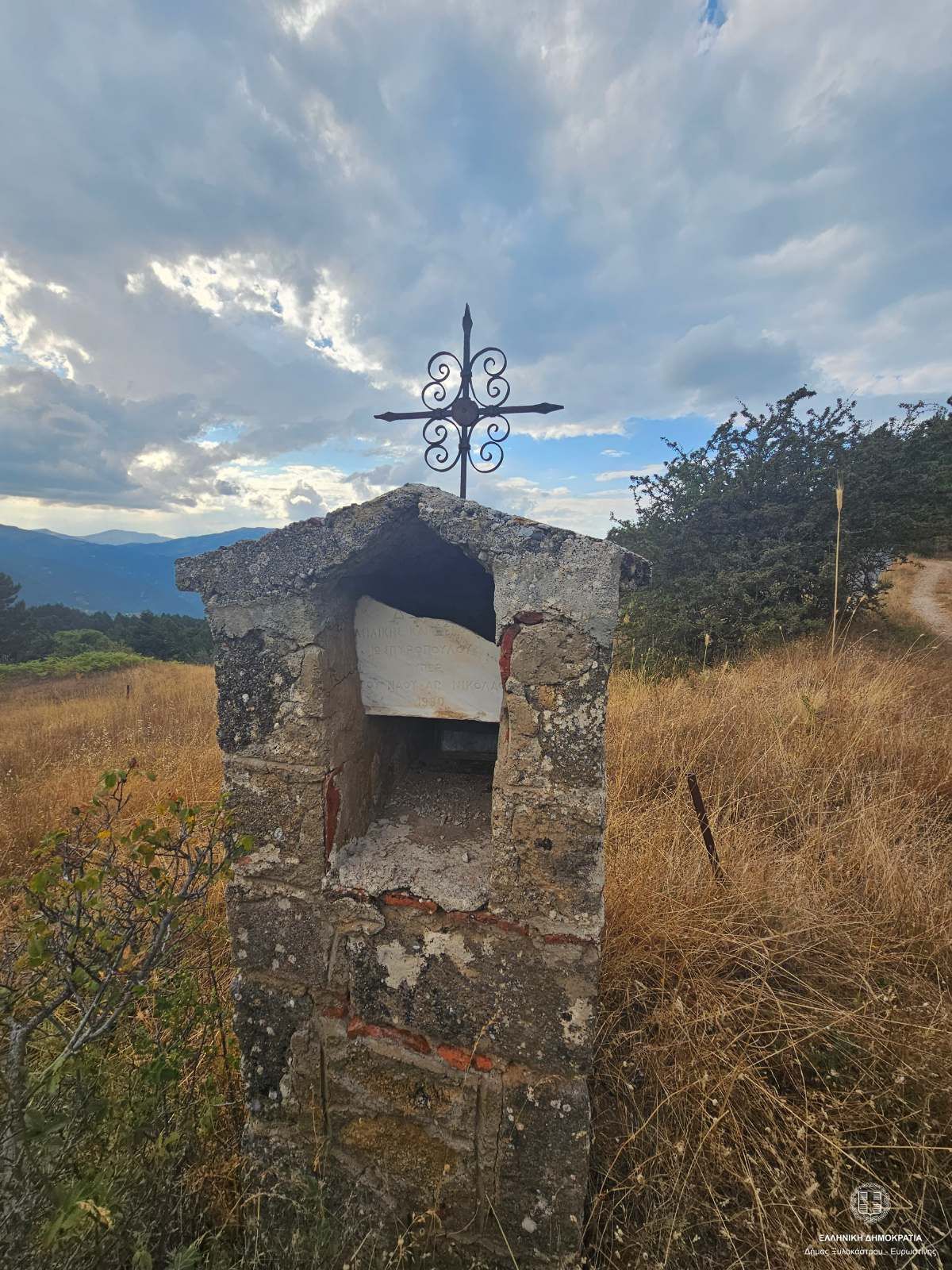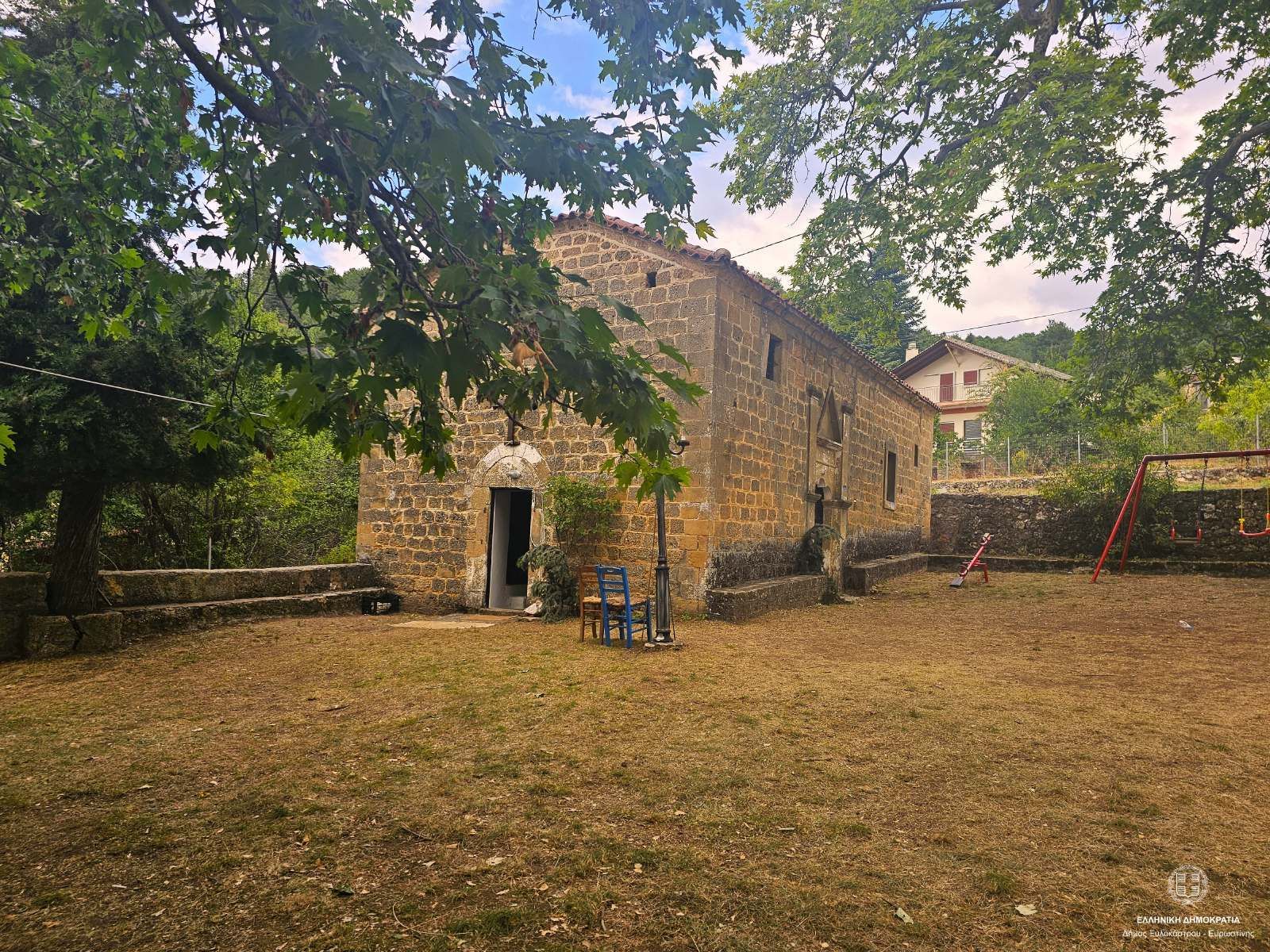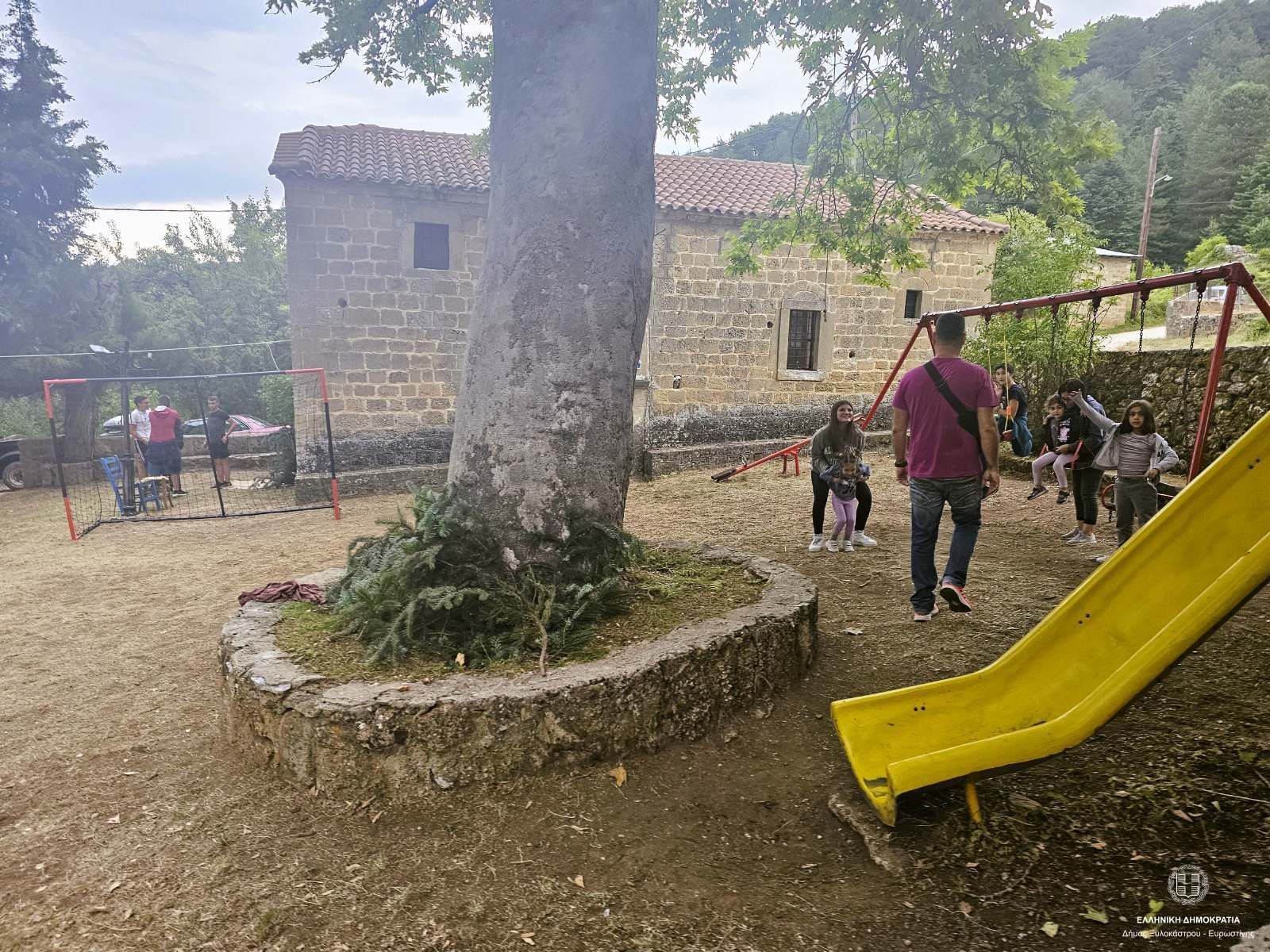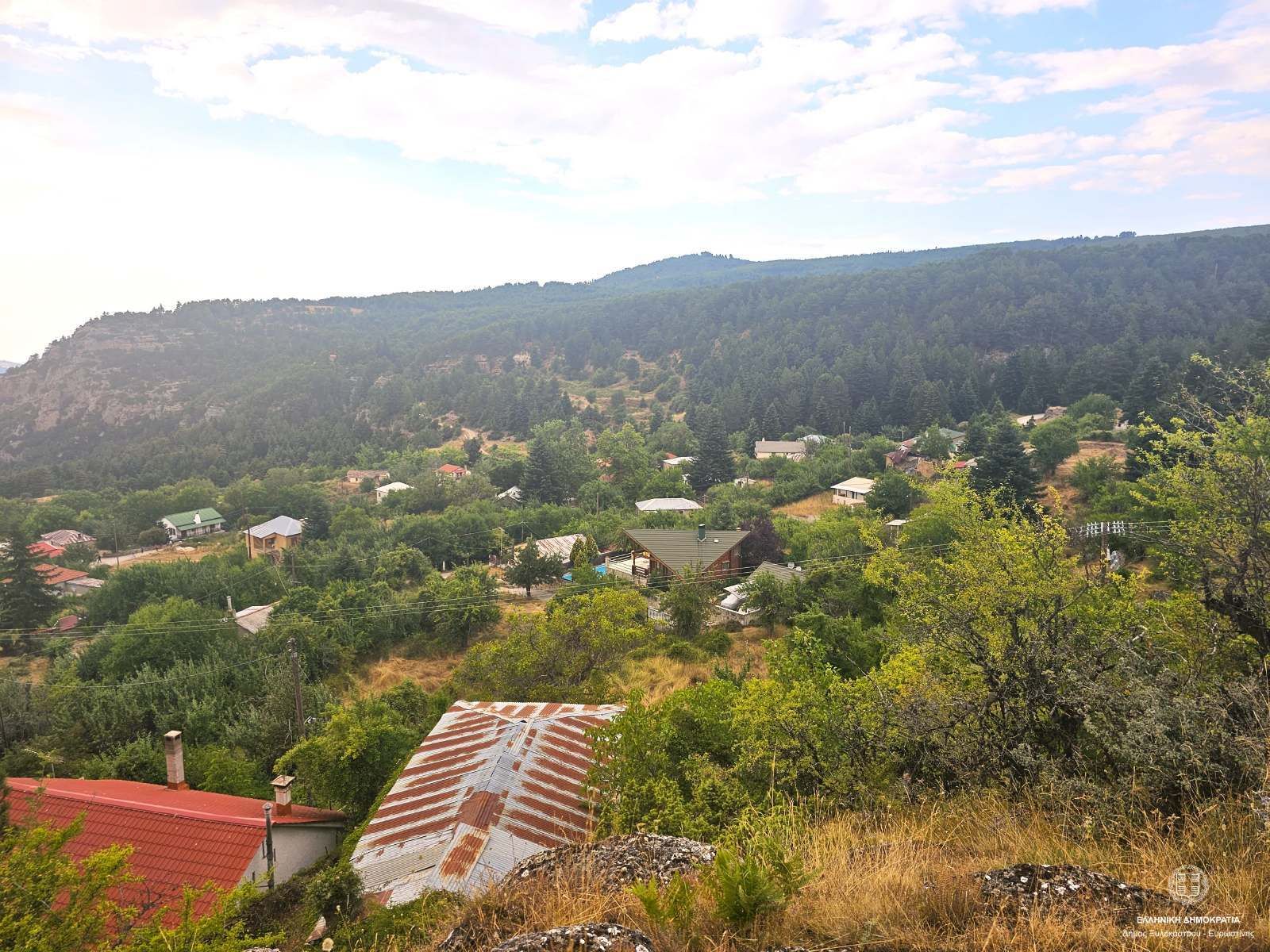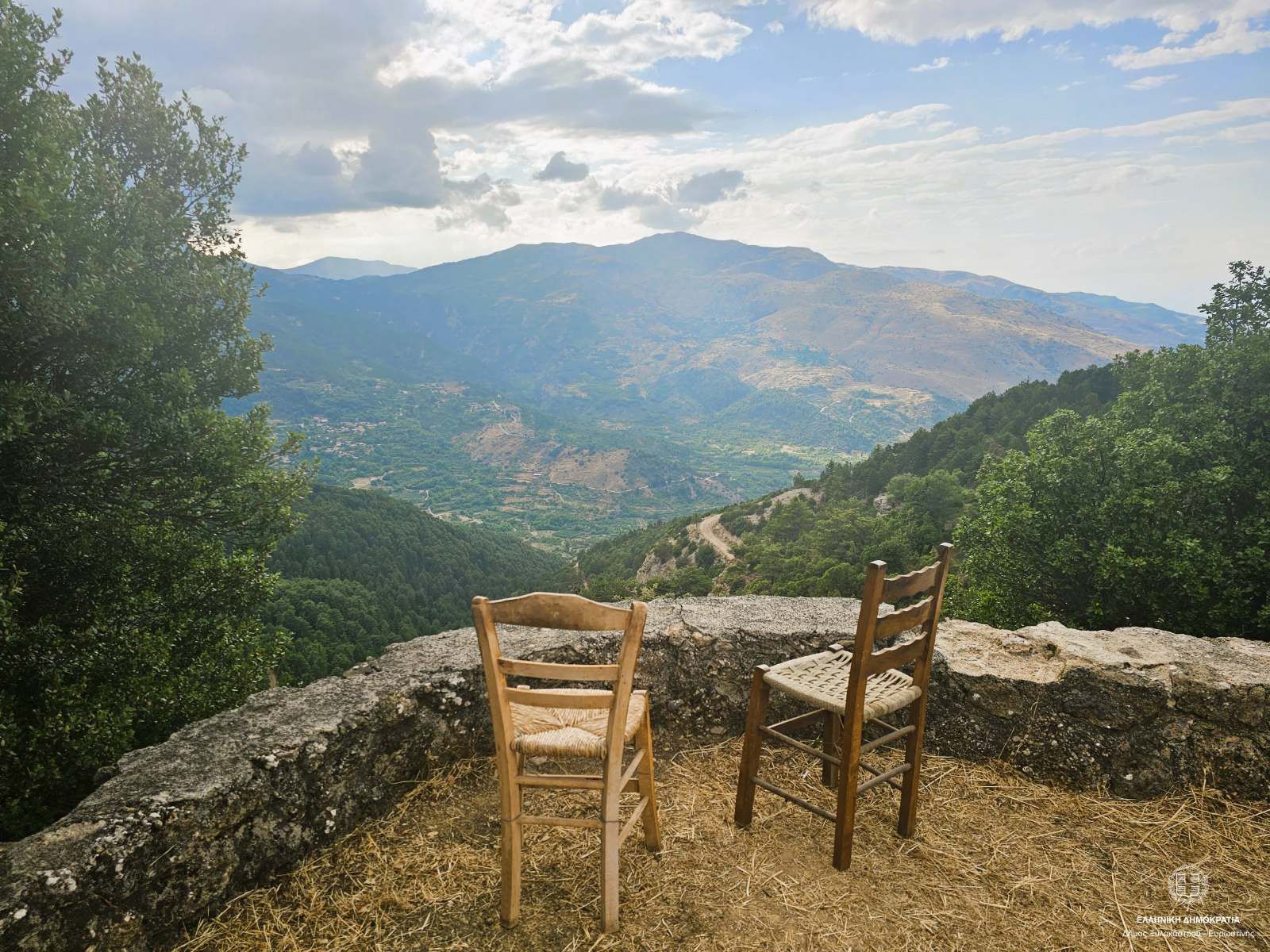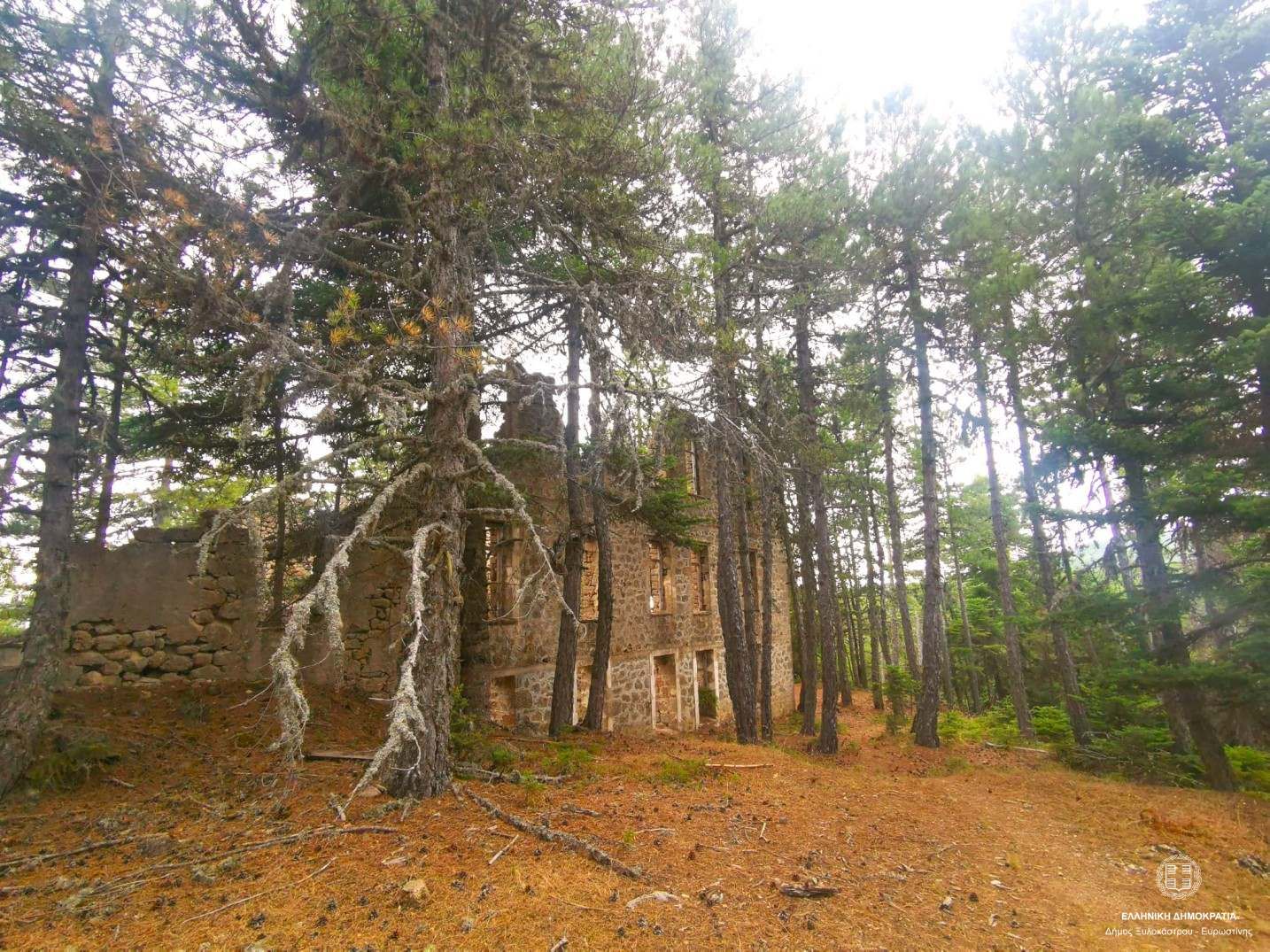Sarantapicho
You may find Sarantapicho at an altitude ranging from 1,230 to 1,300 meters in a lush area filled with black pine and fir trees.
You may find Sarantapicho at an altitude ranging from 1,230 to 1,300 meters in a lush area filled with black pine and fir trees. Even during the summer, and the weather is quite hot in Greece, when the sun sets, you'll need a thick jacket to keep yourself warm. In the winter, the snow can become significantly thick, often making it challenging or even impassable for cars to pass through.
Sarantapicho belongs to the Municipality of Xylokastro - Evrostini and is the village that separates our prefecture with Achaia, as it shares its borders with the villages of “Seliana” and “Perithori”. When you visit Sarantapicho, you'll be surrounded by nature, fall in love with the majestic buildings that hold stories of kings and ministers from the past, explore scenic paths, discover beautiful spots, drink from the numerous village springs, and savor local goodies from farmers and producers. It's an ideal destination to immerse yourself in nature, escape from the hustle and bustle, wander in a pristine place, and meet hospitable people who stay true to their roots and their love for this wild and beautiful village.
Shall we delve deeper into the history of Sarantapicho?
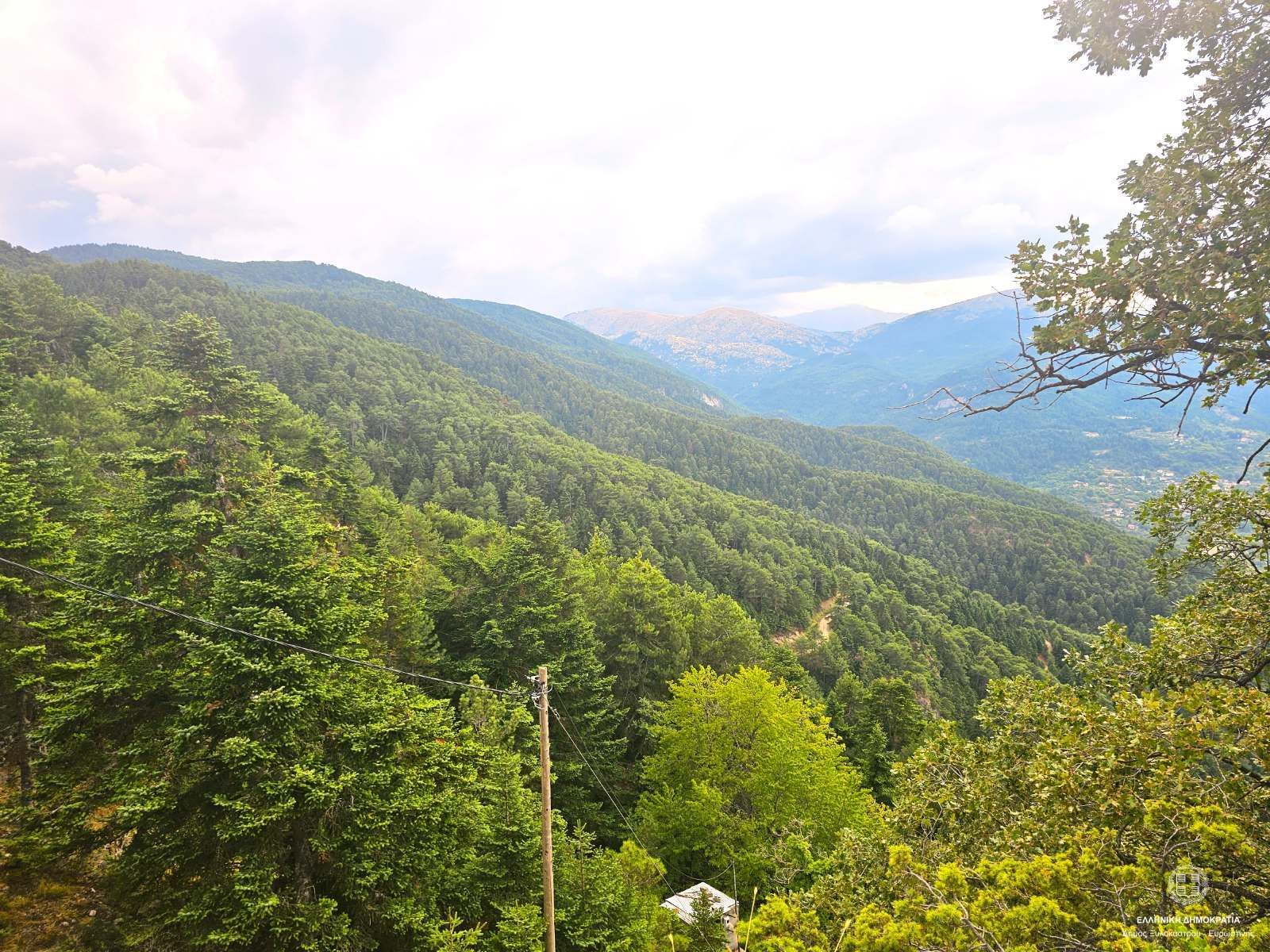
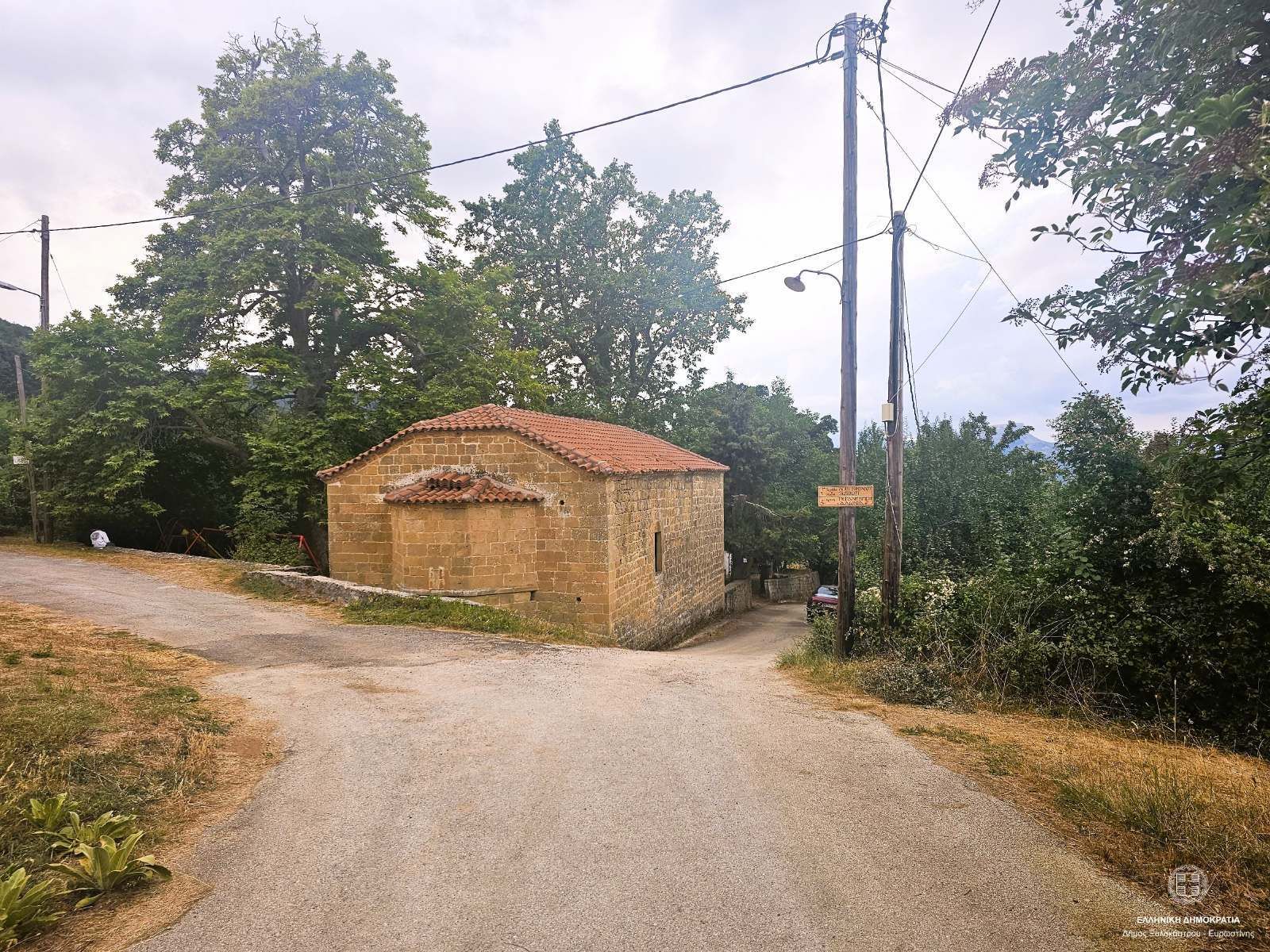
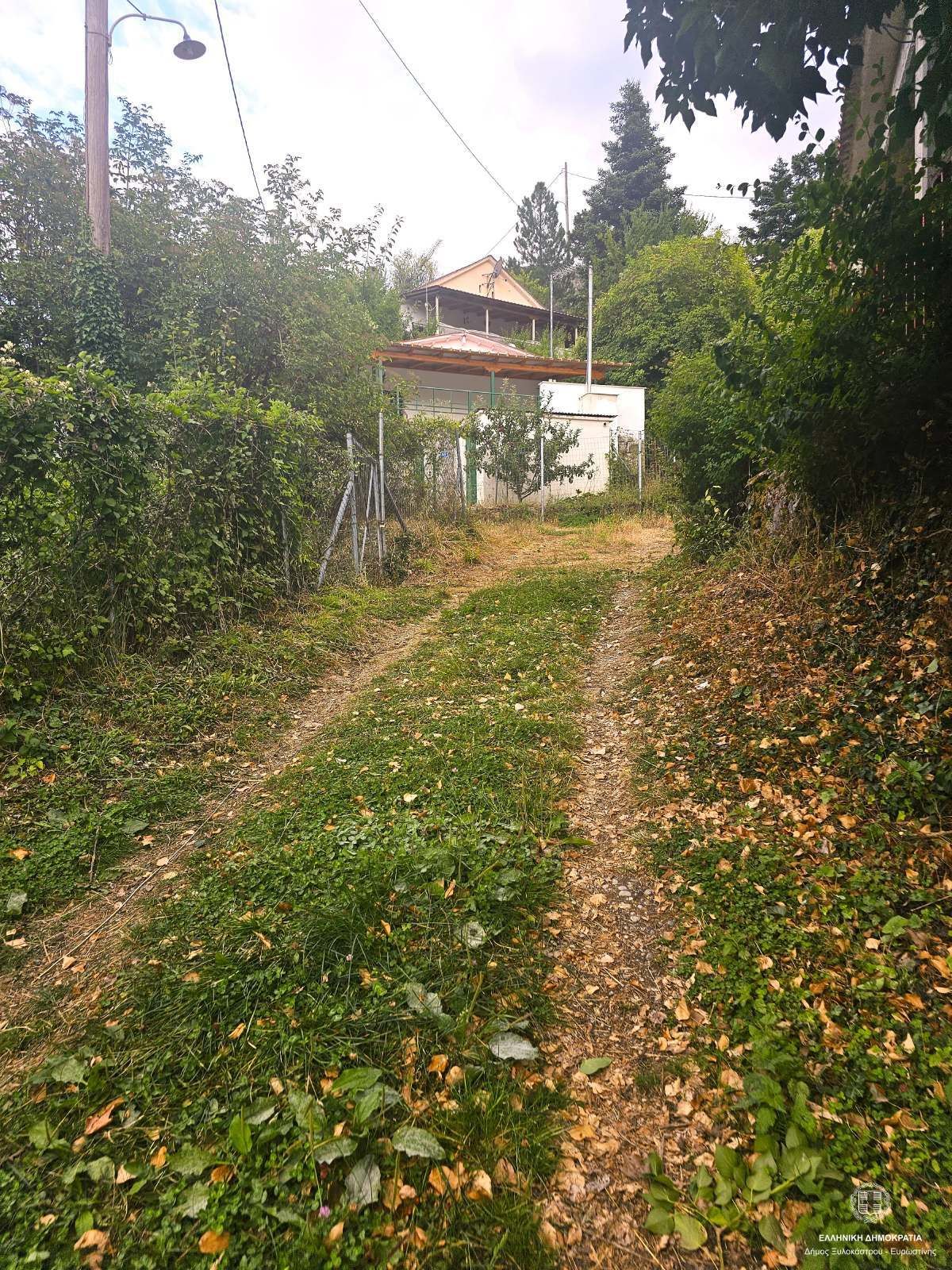
The residents of Sarantapicho share a lineage with emperors!
The village's name carries Byzantine echoes and imperial hues. To get to know its origin, let's rewind to the 8th century AD. The Sarantapichos family, brothers of “Irene of Athens”, the Empress of Byzantium, settled in this area and established a small community, naming it after themselves. And thus, Sarantapicho got the name we call it until today.
Legend has it that the name was bestowed upon Sarantapicho to commemorate a Byzantine victory over the Slavs. The village continued to thrive throughout the Byzantine period and the Turkish occupation, with its existence even documented in the Grimani archives from the Venetian period.
In the past, Sarantapicho used to belong to the Municipality of Chelydorea, later to the Municipality of Zaholi, and eventually it became a part of the Municipality of Evrostini. Today, as we mentioned earlier, Sarantapicho is part of our beautiful Municipality of Xylokastro – Evrostini.
Notably, Sarantapicho is part of a unified district with Sarantapichiotika, a village located after Lykoporia, by the sea. Over time, the residents of mountainous Sarantapicho began moving to lower altitudes during the winter months, leading them to have two permanent homes, one that was resided during the summer and the other that was resided during the winter. This a phenomenon quite common in our region, and we call the people who do the abovementioned “dual residents”.
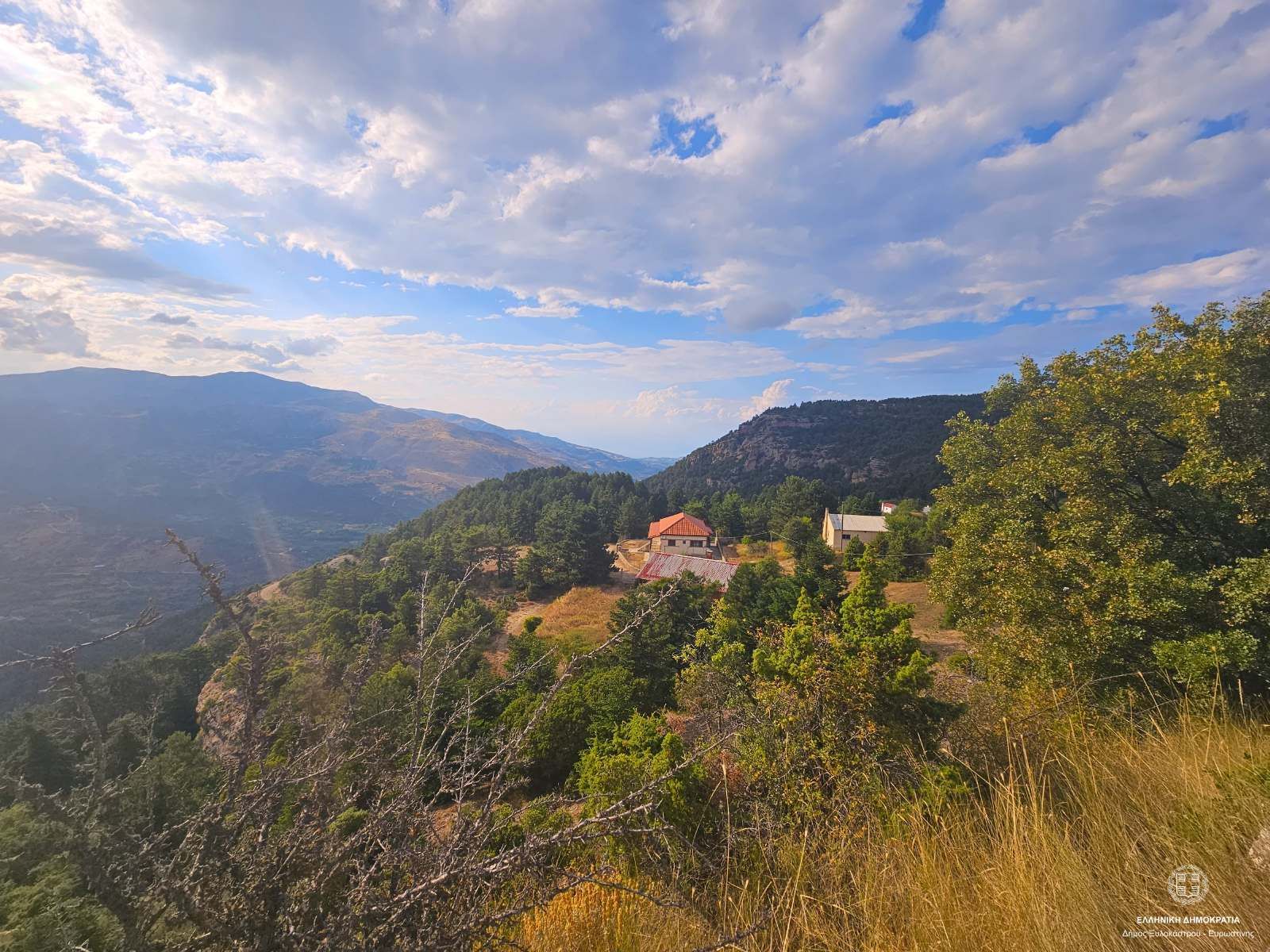
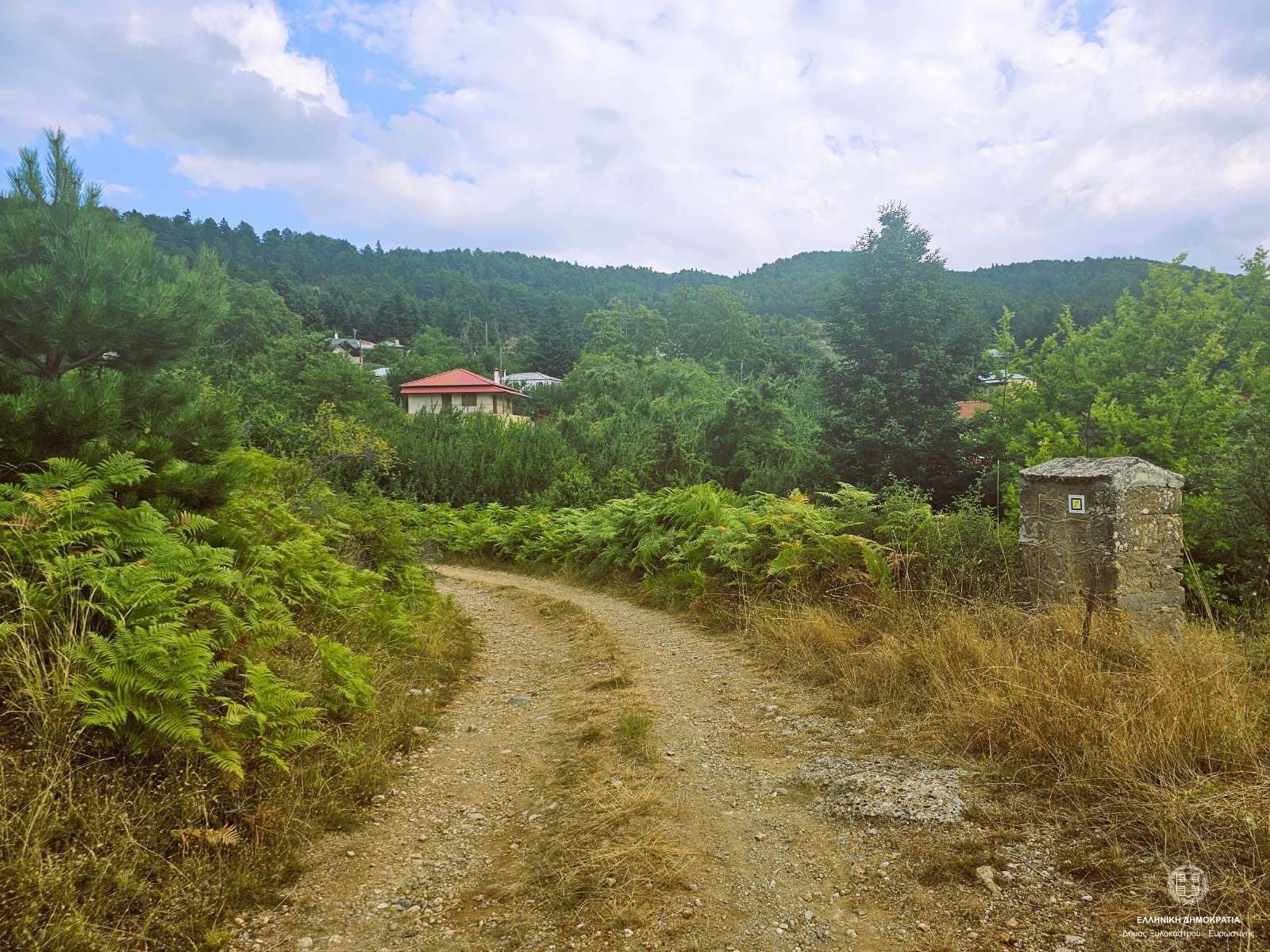
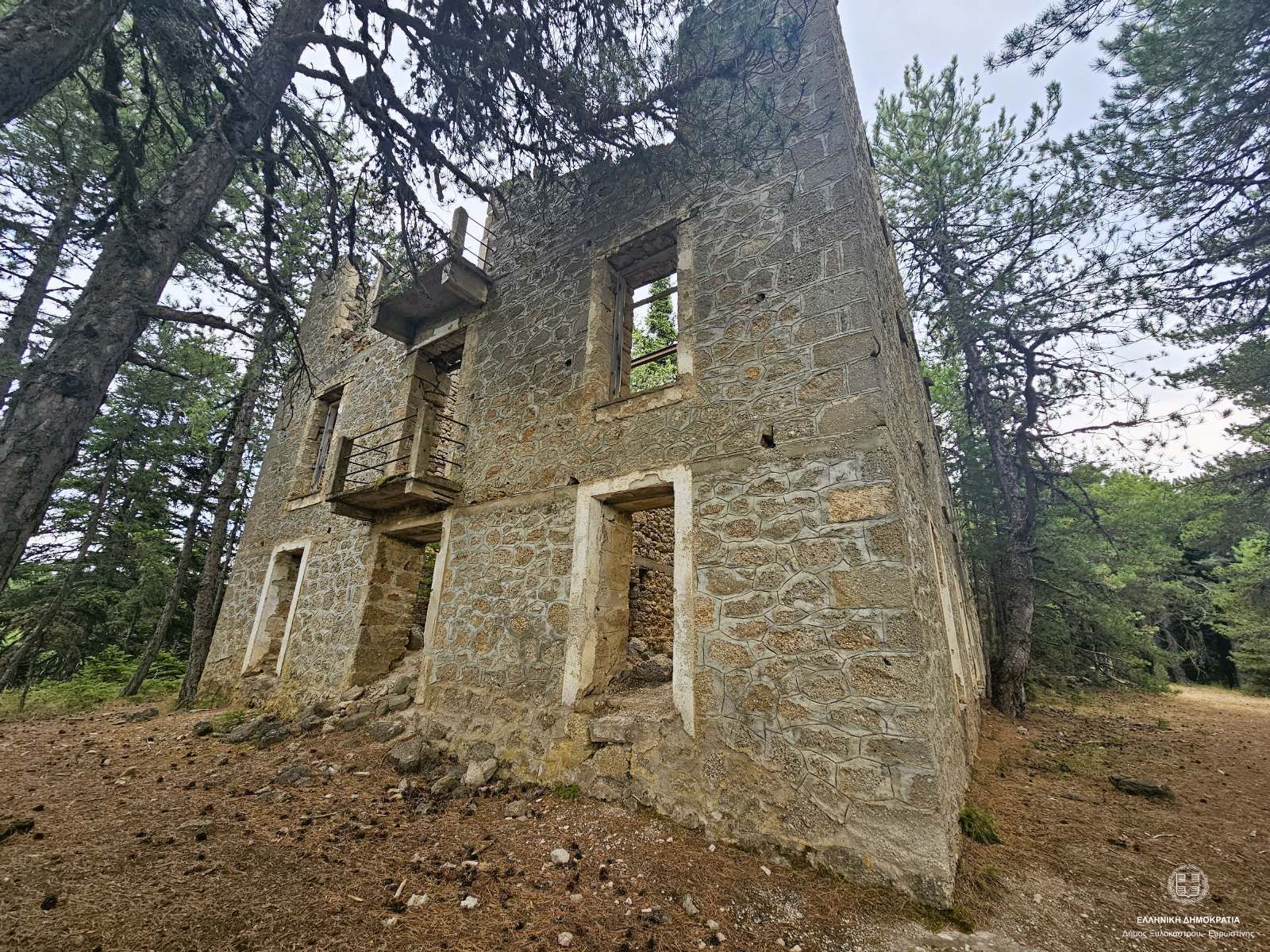
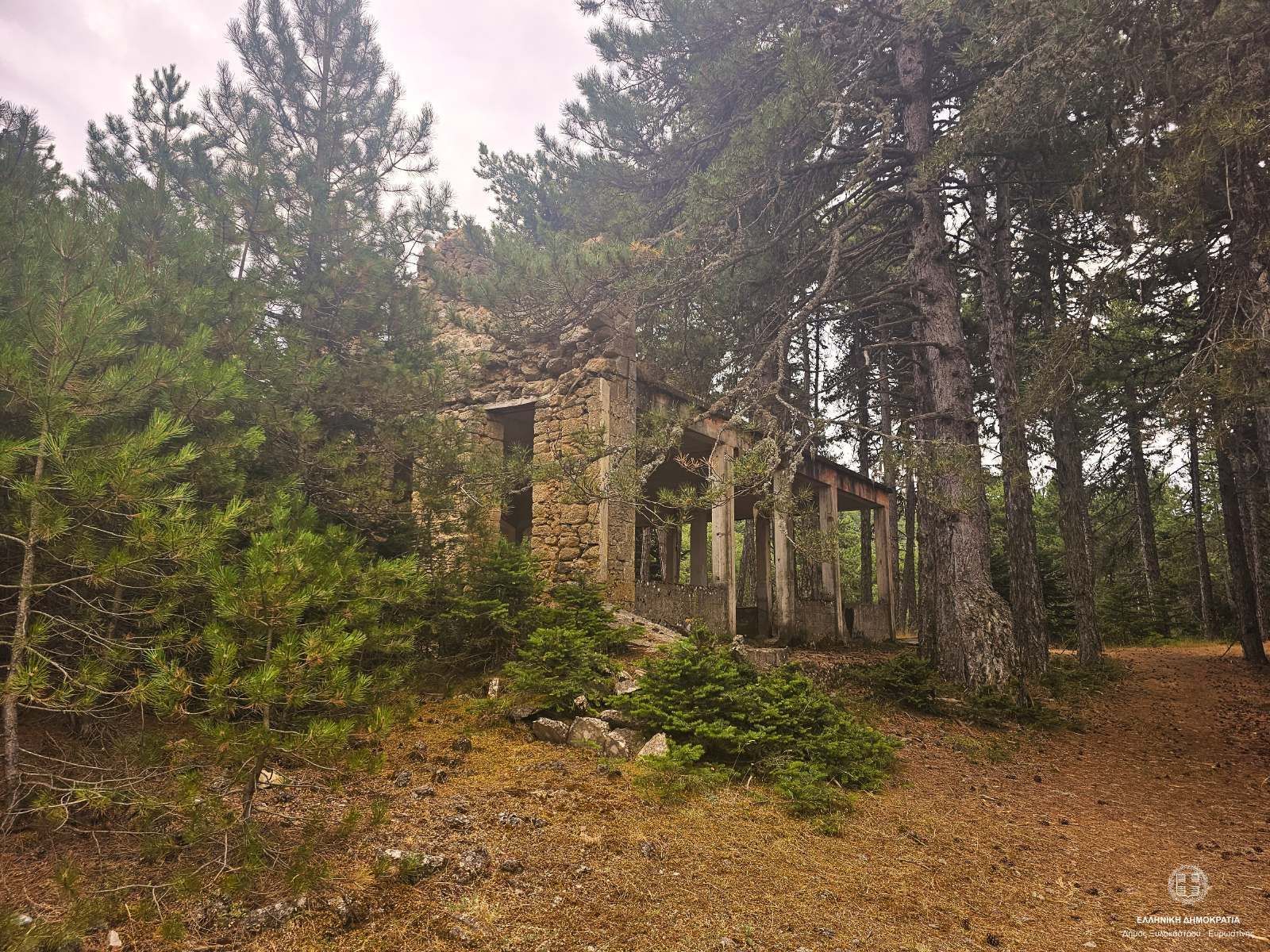
Hotel "Anagenesis" - A haven for businessmen, royalty, and diplomats
They called it “Anagenesis”, meaning “the Revival” in the Greek language. Maybe they chose its name, because of the positive feelings someone experiences when they are surrounded by this magnificent view. Or maybe they were inspired by the legend and history of Chelydorea since the surrounding area is associated with the birth of gods (it is said that Hermes was born there) and according to mythology, music was also created there. Regardless, one thing is certain. The Anagenesis Hotel, which operated from 1929 to 1940, attracted a host of distinguished visitors, the ultimate VIP’s of that era. Royalty, including Farouk of Egypt, ambassadors, ministers, businessmen, medicine students, and notable professionals from Greece and the globe flocked to Sarantapicho for holidays and rejuvenation.
The three-story stone building, boasting 70 rooms, electricity generators, bathrooms, a grand hall with a piano, and a spacious restaurant, offered amenities like today's five-star hotels. The hotel provided many options for various activities, as it contained a tennis court, a gambling club, and a movie club, all of which served to entertain its residents.
Today, you can still find the stone building where beds and balconies used to be, but it has undergone significant changes. The old water heaters have rusted, the stairs and more have been reclaimed by nature, and time's harsh impact is visible everywhere. You will also be able to witness a large piece of the main entrance before you approach the hotel.
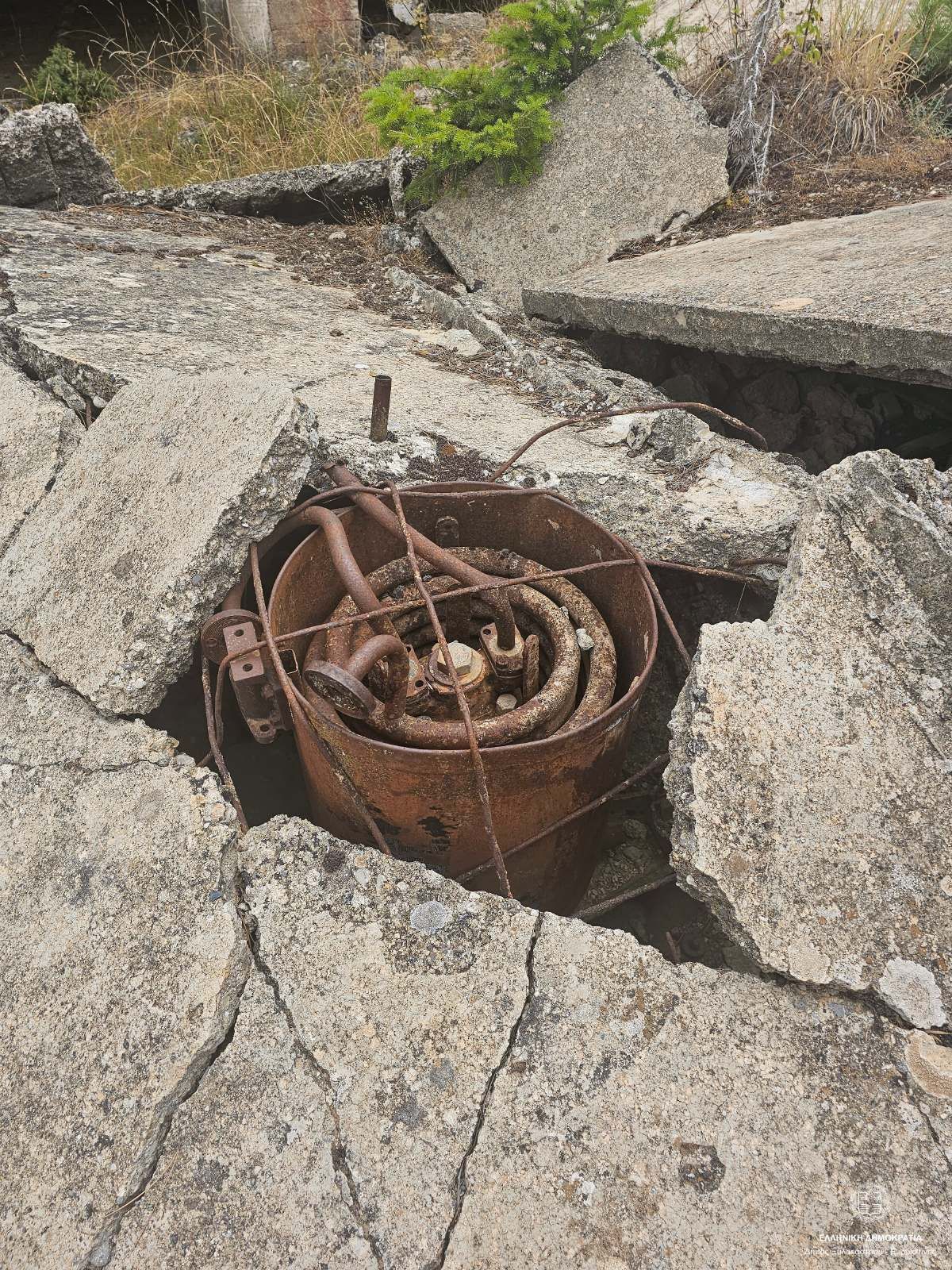
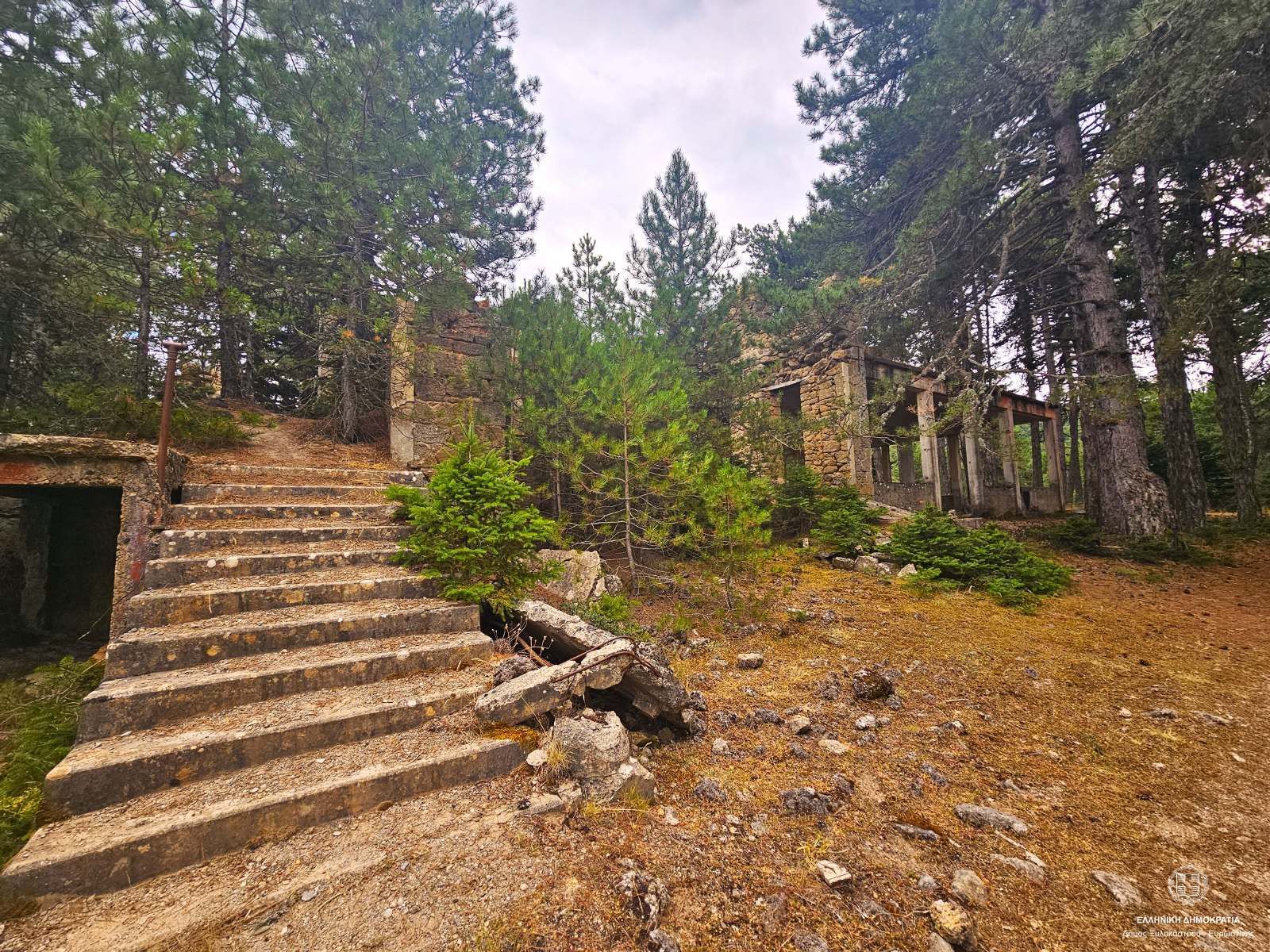
Sarantapicho's Airport - A gateway between the skies and earthly beauty
Believe it or not, Sarantapicho had an airport, built to meet the needs of the hotel and the high-profile guests it used to host. The airport was located at an altitude of 1,315 meters, an extraordinary height for that era. Planes (manufactured mostly in the UK and Germany) landed on its runways. The airport's legacy still endures through the stories shared among residents.
Some of them even experienced the airport's heyday, while others heard stories from their families during the family and friends’ gatherings. Some even pieced together some imaginary stories from the photographs that came into their possession as the myth continued to exist.
The airport was in operation until 1940 when it was destroyed by the Italians, during World War II. The invaders, seeking to prevent any aircraft landings, dug up the runway, gradually transforming the area's once glamorous history into a memory. Today, you'll find a boulevard flanked by pine and fir trees, streams, and memories, where the airport once stood.
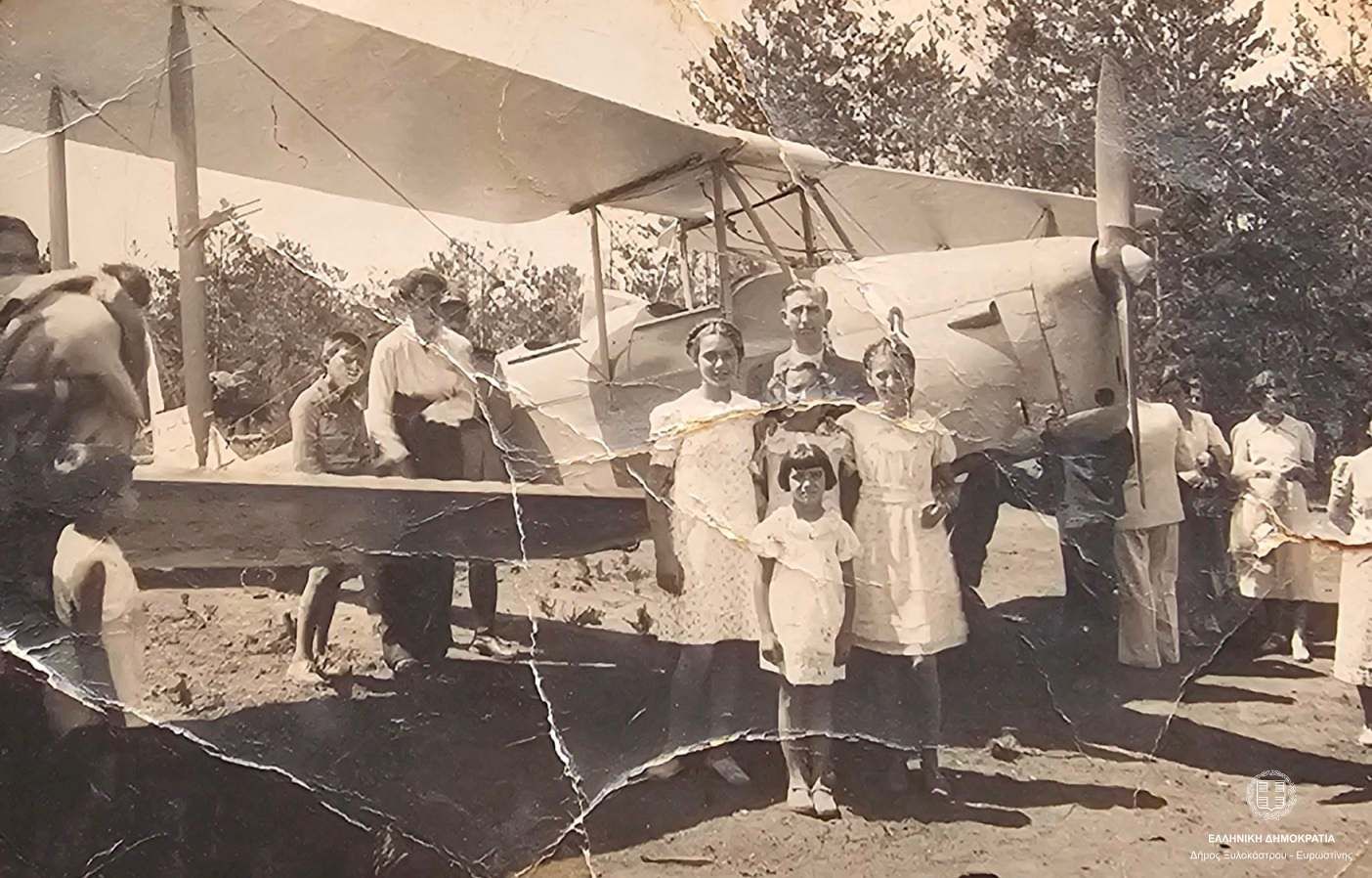
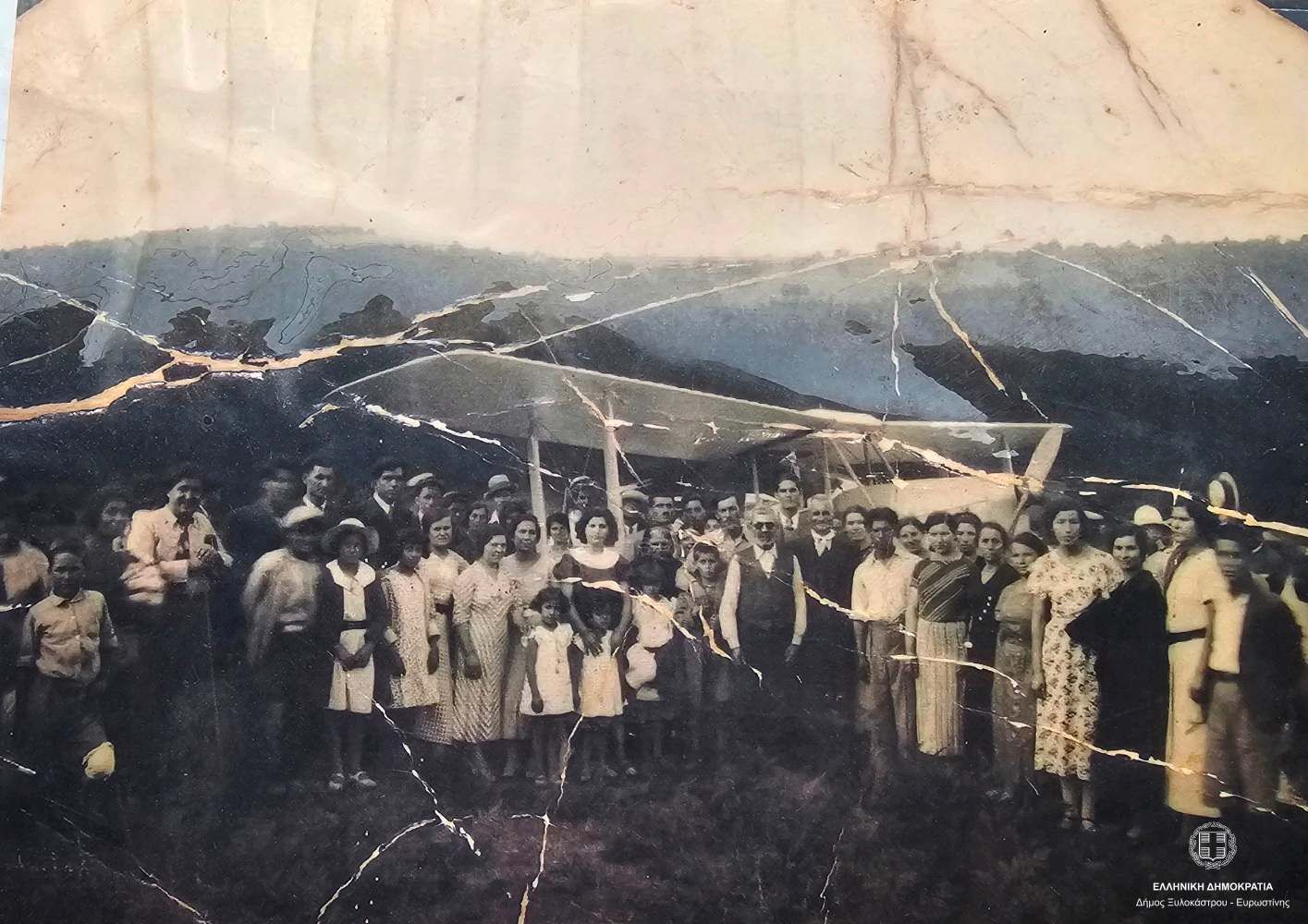
Temples, Chapels, and Shrines
Sarantapichiotes (as we call the residents of Sarantapicho) are deeply religious. Once entering the village, you'll encounter the lovely Church of the “Assumption of the Virgin Mary” lying in the central square. It was built in 1811, and celebrates every August, the 15th. In the absence of priests, on the 14th of August, the women gather to chant the hymns in a solemn atmosphere.
About 15 minutes from the main church, you'll find the chapel of St. Nicholas, celebrated on May 9. It's a simple chapel with a breathtaking view, and until 1940, its yard was used as a cemetery, too.
Sarantapicho, like all our villages, has also a chapel dedicated to Prophet Elias, located at the “Kouveli” spot. It is celebrated on July the 20th and was built in the 1960s. Along the road to Agios Nikolaos, you'll also find a shrine, which the locals still take good care of.
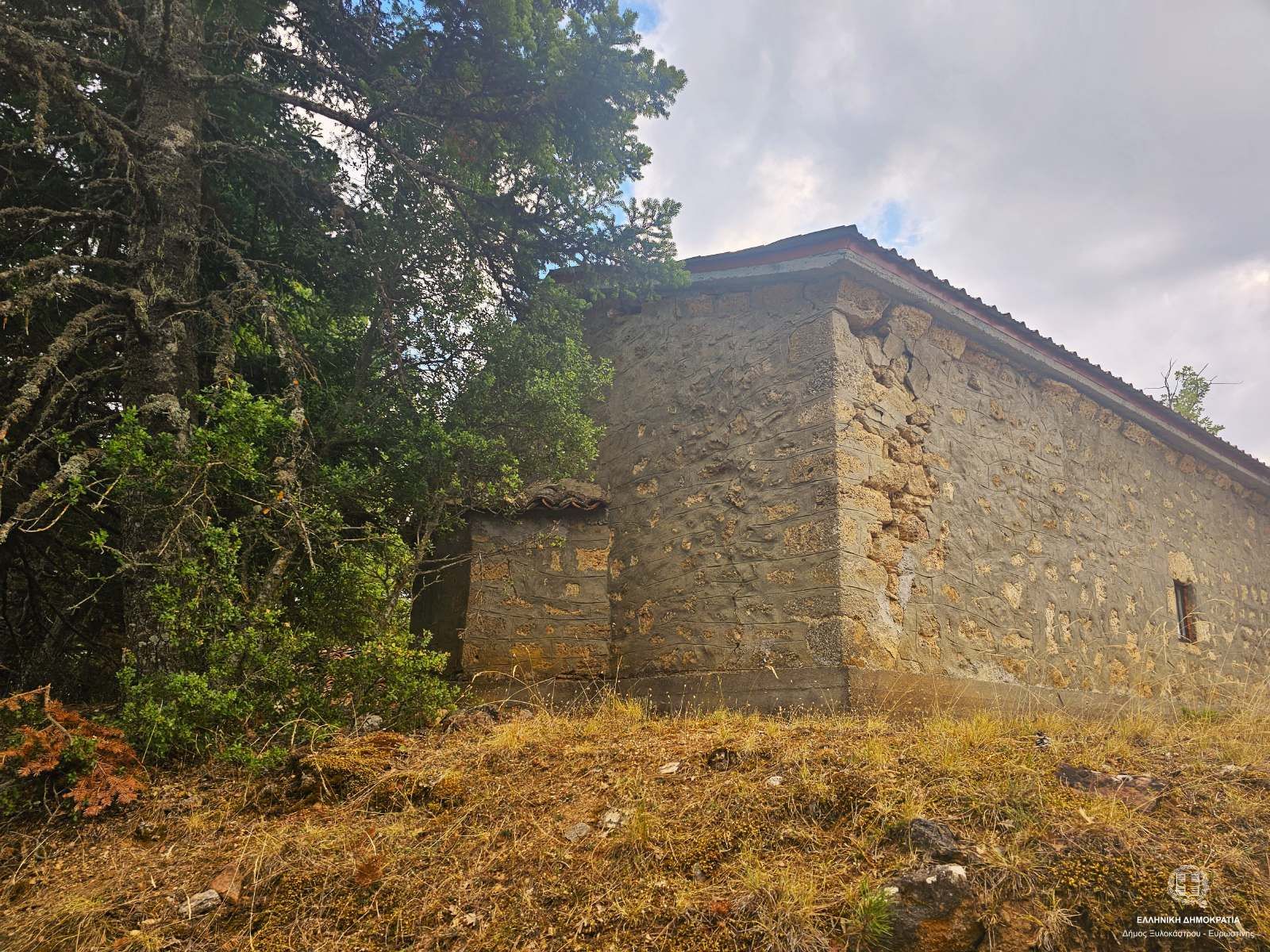
Η Βίλα του Κίστερ – Ένα πέπλο μυστηρίου τη σκεπάζει
Μέσα στο δάσος, σε ανισόπεδο έδαφος και σε μικρό ύψωμα, θα βρεις τη «βίλα του Κίστερ». Μην περιμένεις να βρεις κάποια έπαυλη, παρά ένα διώροφο, πέτρινο σπίτι που ο χρόνος δείχνει με σκληρότητα και σαφήνεια τα σημάδια του. Χωρίς κανένα έπιπλο στον κάτω όροφο, παράθυρα που δεν έχουν τζάμια, χωρίς πόρτες ή οτιδήποτε άλλο θα μπορούσε να σημάνει ότι κάποιος μπορεί να πέρασε πρόσφατα από εκεί, η βίλα του Κίστερ έχει πάνω από 80 χρόνια να κατοικηθεί.
Ανήκε σε έναν επιφανή Γερμανό, ο οποίος ζούσε στο Σαραντάπηχο. Μόλις κηρύχθηκε ο πόλεμος του 1940, ο ίδιος εγκατέλειψε το σπίτι του και δεν ξαναγύρισε ποτέ, γεγονός που ενίσχυσε ακόμη περισσότερο τους ισχυρισμούς που τον ήθελαν πληροφοριοδότη των Ναζί.
Η βίλα του Κίστερ, που πλέον αποτελεί ιδιοκτησία του Δασαρχείου, διαθέτει μια εσωτερική, στενή σκάλα που οδηγούσε στην κρεβατοκάμαρα, προφανώς. Σήμερα, υπάρχει ακόμη, αλλά δεν τολμήσαμε να ανέβουμε στον πρώτο όροφο, με δεδομένο ότι το κτίσμα είναι εξαιρετικά παλιό και εγκαταλελειμμένο εδώ και αρκετές δεκαετίες.
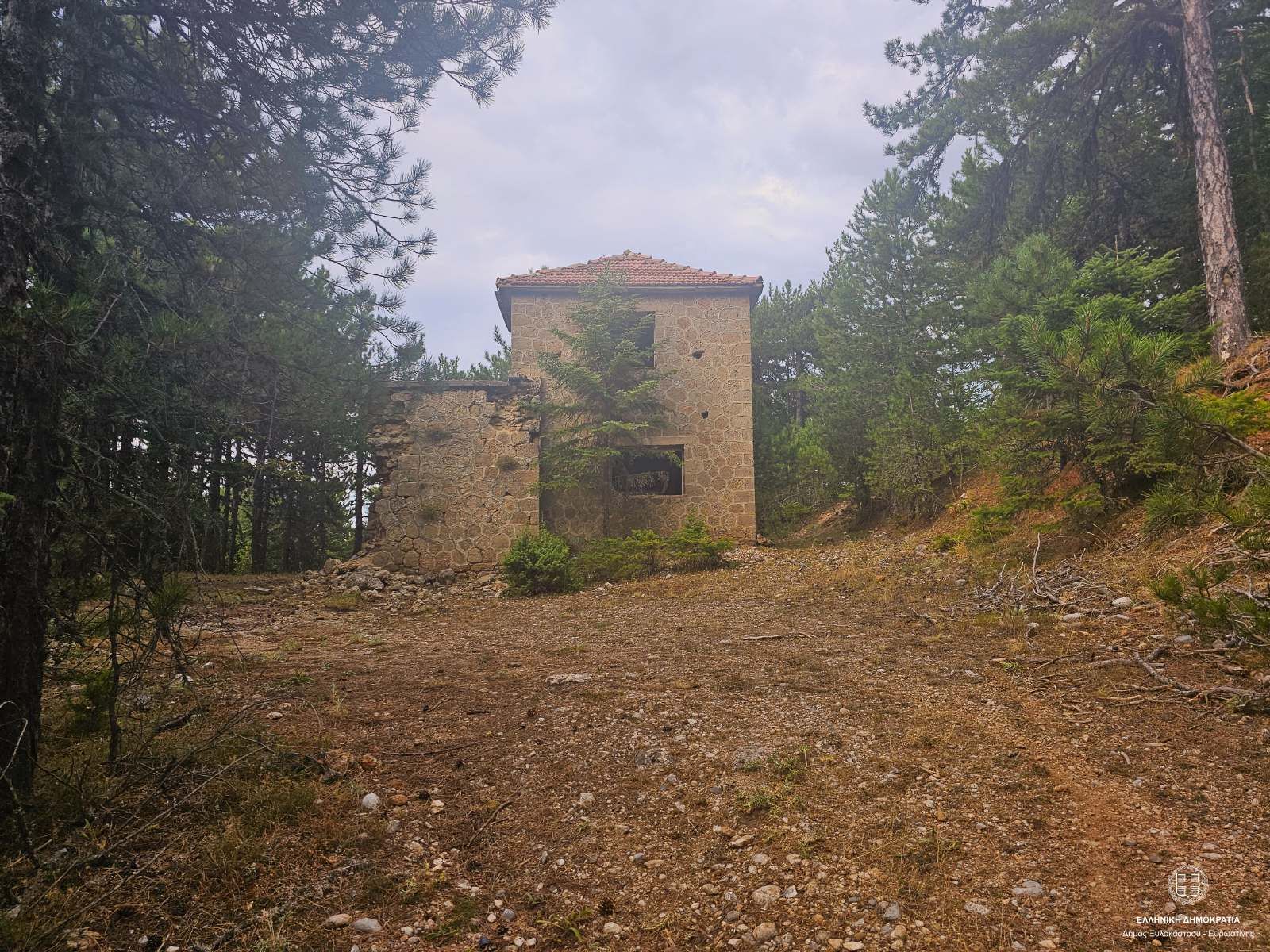
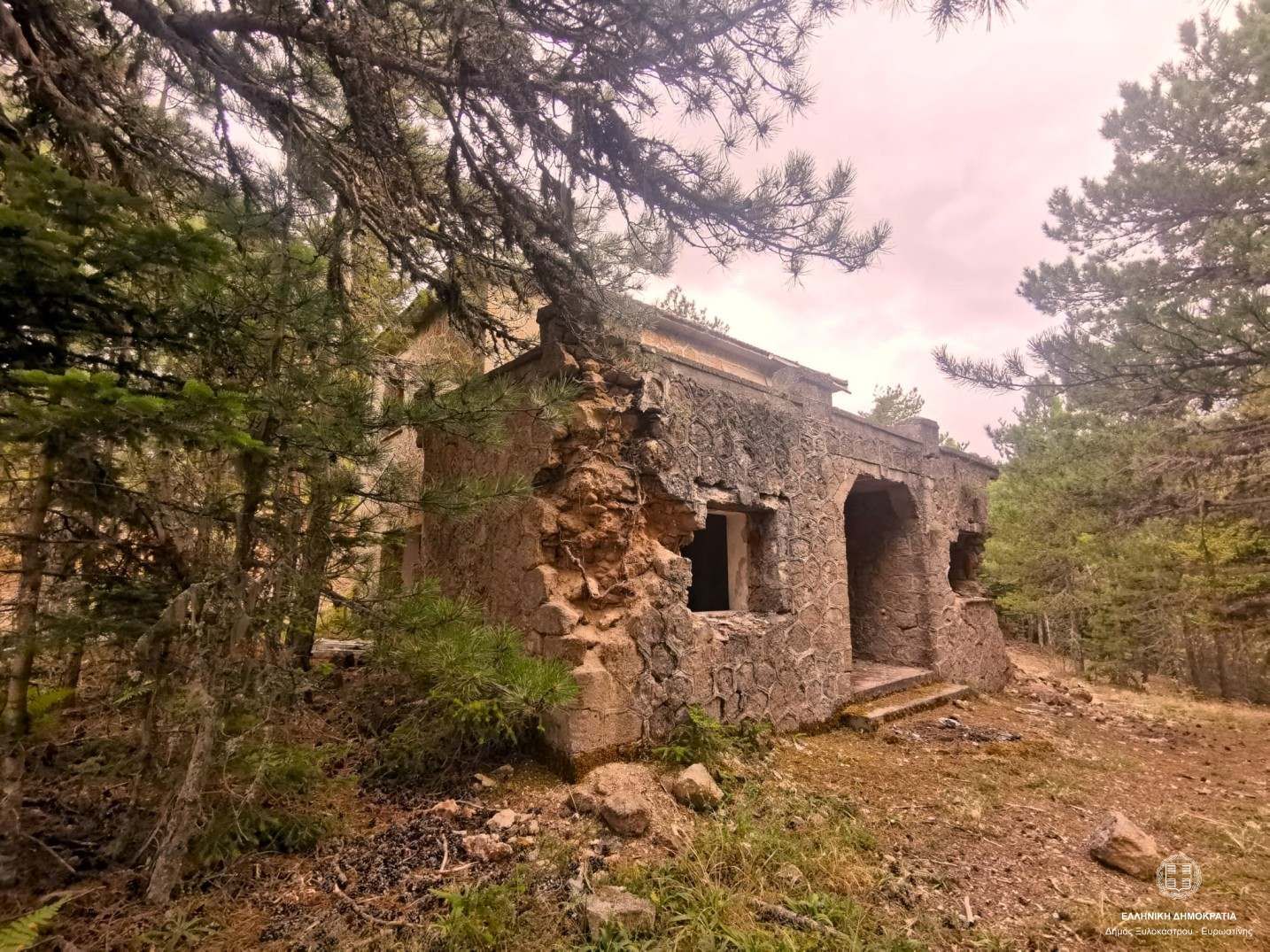
The Centenarian in Today's World - Discover and Embrace It!
Apart from its rich history and natural beauty, Sarantapicho has a close association with the Sarakatsanians and the "Antamoma" festival, which occurs almost annually at the village. This event is portraying the life of the Sarakatsanians’ ancestors that lived as nomadic cattle breeders and settled in our region. The festival has become a longstanding tradition.
Even today, a few permanent residents in the village continue to engage in animal husbandry and logging. During the summer months, you'll find a café in Sarantapicho, offering everything from coffee to souvlaki, steak, sausages, and local, handmade cheese. It's run by a welcoming family in the square of Sarantapicho, where the central church is situated, attracting visitors of all ages.
What we loved about Sarantapicho, in addition to the warm welcome we received and the guided tours, is how it seamlessly blends history, beauty, the present, and the past. Fountains, small churches, stone edifices, breathtaking vistas, and historic structures that narrate the past make the nature trails more delightful, intriguing, and relaxing.
The village boasts an exceptionally active Cultural Association, constantly proposing and organizing new activities. The old photos featured in the section covering the airport were graciously provided by the Association mentioned above, and more specifically by Mrs. Maria Abatzi.
As soon as the weather brightens and the urge for outdoor adventures, exquisite cuisine, and the allure of unspoiled beauty strikes, Sarantapicho is the place to be. And don't forget… “The Agnanti” spot, where wicker chairs await on the terrace, offering a chance to weave your own summer tales against the backdrop of the most captivating view, is one of the hidden gems of the village you cannot miss! Just ask the locals, and they will take you there.
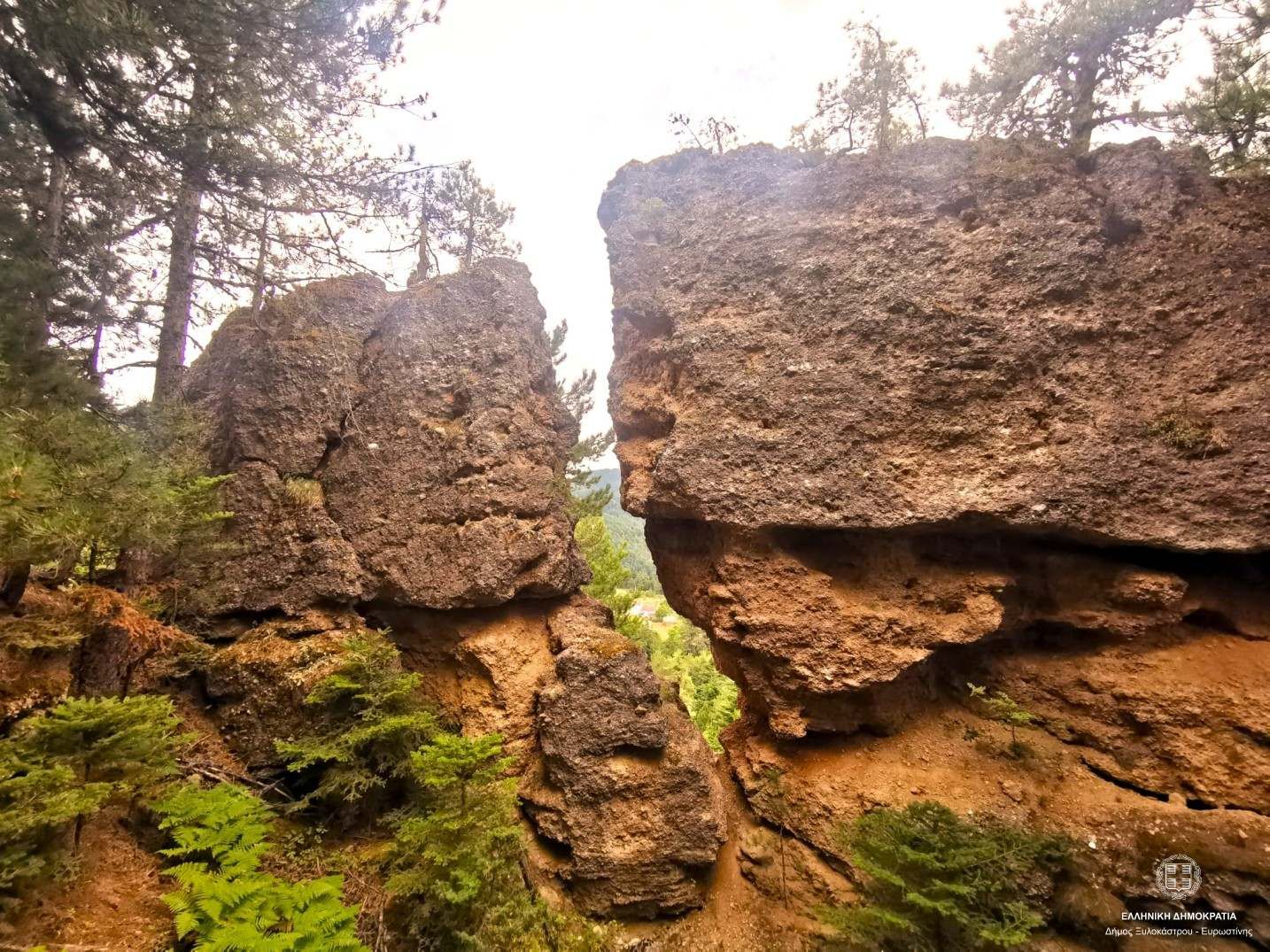
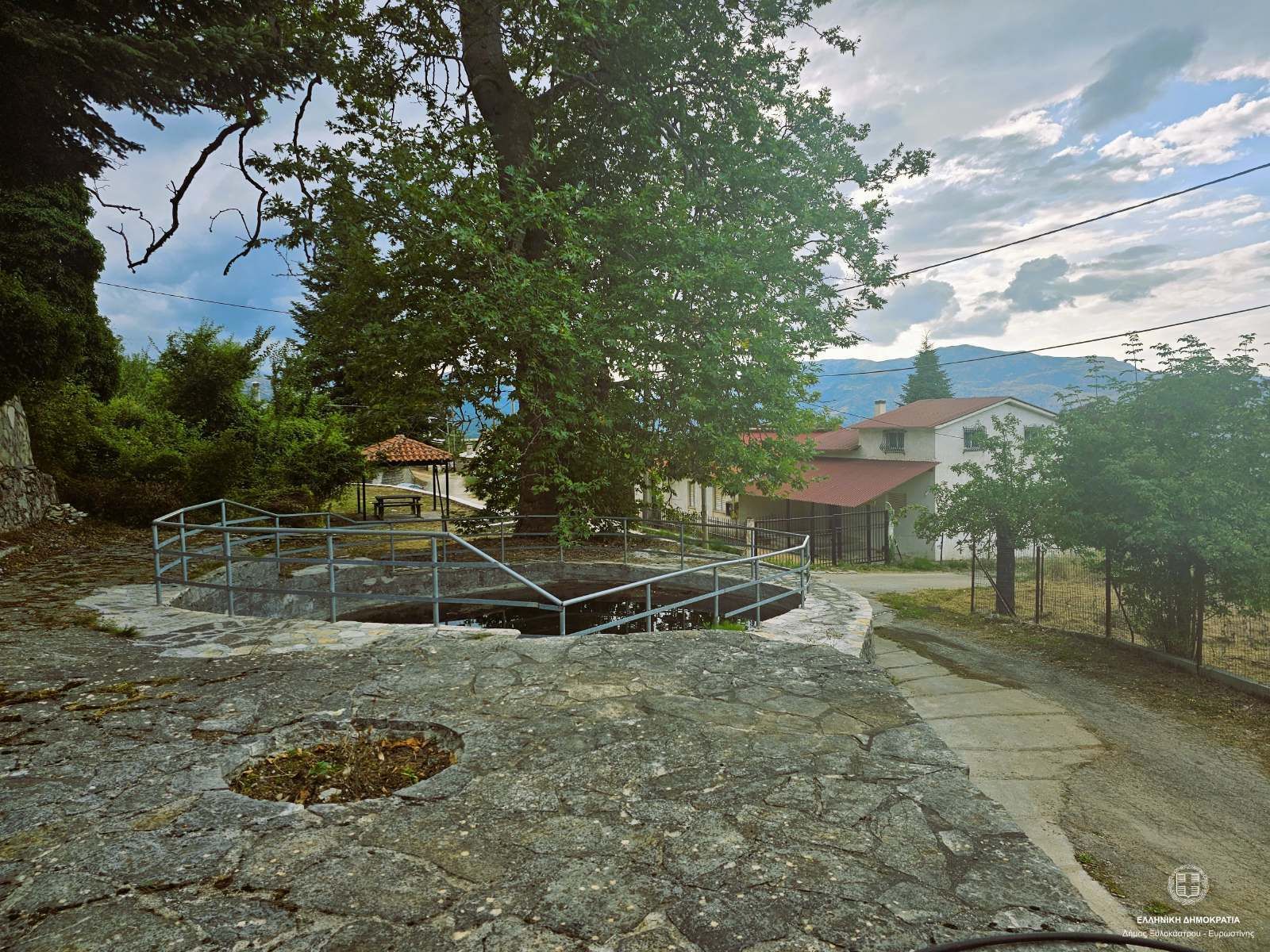
*Γράφει και επιμελείται τα κείμενα για τον Δήμο Ξυλοκάστρου - Ευρωστίνης η Ιωάννα Δούρη, Comms & Marketing Manager
Ένα τεράστιο ευχαριστώ στον κ. Ιωάννη Ξ. Σπυρόπουλο, ο οποίος μας παραχώρησε σημαντική γνώση, η οποία συνέβαλε καθοριστικά στη σύνταξη του παραπάνω κειμένου. Ο κ. Ι. Σπυρόπουλος έχει συλλέξει ιστορικά και άλλα στοιχεία για το Σαραντάπηχο και τα έχει επιμεληθεί με πολλή αγάπη. Μπορείτε να βρείτε την προσωπική του ιστοσελίδα με ακόμη πιο ενδελεχές υλικό για το όμορφο χωριό, πατώντας εδώ.







